Take your curiosity on the journey of a lifetime to discover the authentic beauty and endless wonder of our world. In 2026, we’ll recapture the pioneering spirit of navigators from the past, exploring distant lands, diverse traditions and delectable cuisine across six continents on our luxuriously intimate flagship. Travel deeply with destination experts, uncover hidden gems, connect with local culture, and sail into the soul of each place in personalised comfort and with extraordinary special events.
About Silversea
Silversea’s small luxury ships are designed for those who delight in the thrill of discovery while indulging mind and body in the most lavish surroundings imaginable. Not only have they expanded their all-inclusive service and added door-to-door transfers for seamless travel from home to ship and back again, but they've added shore excursions on all voyages!

About Luxury Round the World
The trusted resource for those who seek to experience the wonders of our world in ultra luxury, Luxury Round The World offers full-service travel consultancy specific to round the world cruises, global jet expeditions, and bespoke travel itineraries.
By the numbers
Destinations
Your Journey
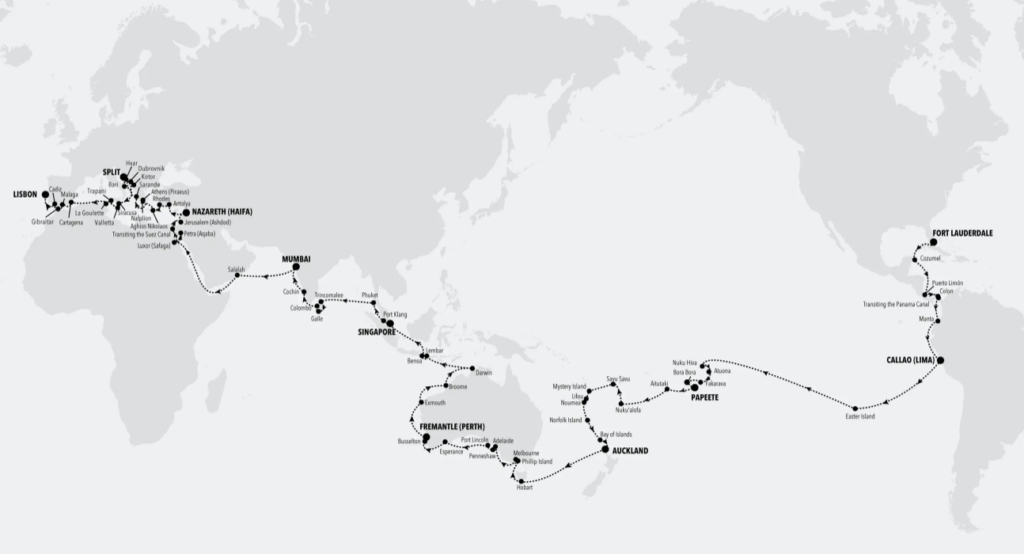
Itinerary
Fort Lauderdale, Florida
Fort Lauderdale, Florida
Overview
Departure 18:00
Miles of sandy beaches, lively outdoor events, and a charming web of waterways help to make Fort Lauderdale a relaxed, vacation capital of Florida. The excitement is palpable, as cruise ships and gleaming yachts gather in the harbour ahead of adventures and luxury journeys across the waves. Soak up the relaxed atmosphere in the canal-laced 'Venice of America,' as you enjoy big label shopping on Las Olas Boulevard - or visit fancy restaurants and bustling art galleries. For a wilder experience, the swampy wetlands of the Everglades sprawl away nearby. Fort Lauderdale Beach is a lively stretch of sand, bordered by palm trees, and sprinkled with crowds enjoying the Sunshine State's generous weather. The charming promenade of red-brick tiles extends right along the beach's length and rumbles with passing rollerbladers and cyclists. Flick across the waves while paragliding, or relax with a coffee or a margarita in a beachfront bar, as volleyball games play out in front of you. For a quieter beach option, Olas Beach lies a little down the coast towards Port Everglades, and has extra space to spread out and tan on acres of smooth white sand. Spot the backs of alligators waiting patiently, and the toothy grins of crocodiles patrolling the murky waters of the Everglades – the USA's biggest tropical wetlands. A haven of extraordinary wildlife, birds wade through its swamps, and black bears and panthers roam its wilds. Take to a plane to appreciate the full scale of the national park or purr along exploring its waterways in a fan powered boat.

Day at Sea
Day at Sea
Overview
International Waters
Days at sea are the perfect opportunity to relax, unwind and catch up with what you’ve been meaning to do. So whether that is going to the gym, visiting the spa, whale watching, catching up on your reading or simply topping up your tan, these blue sea days are the perfect balance to busy days spent exploring shore side.
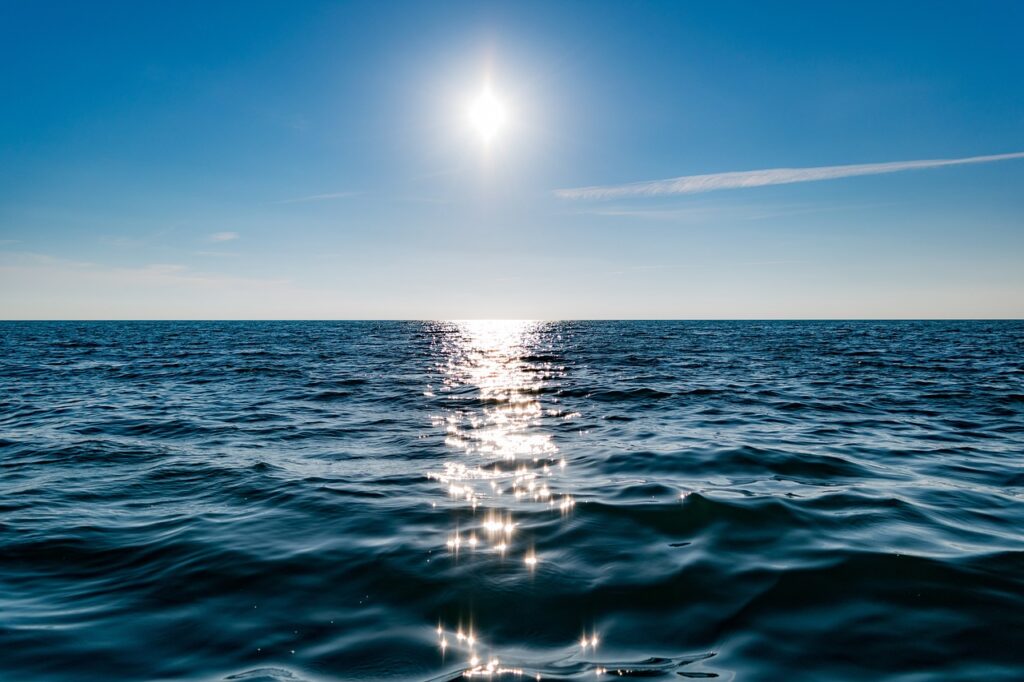
Cozumel, Mexico
Cozumel, Mexico
Overview
Arrival 08:00 / Departure 23:00
Dive into the exuberant, colourful world of Cozumel - a Mexican island of exceptional scuba diving, snorkelling and dazzling beaches. Abundant underwater ecosystems swirl among reefs of black coral - attracting experts and beginners alike to the azure waters of this island. Mayan mythology says Cozumel was the sanctuary of the Goddess of fertility and love, Ixchel - and this seducing Mexican island of adventure and allure leaves all visitors head over heels. Waiting across the Carribean waters from Playa Del Carmen, and a world away from its lively resorts, Cozumel is an idyllic land of gently curving palm trees and tropical shores. Playa Palancar occupies the western coast, with velvety powder and balmy Caribbean seas. Relax, with just the notes of the washing sea and whispering palm trees accompanying you during splashes through the shallow waves or tanning sessions on the soft sand. Playa El Cielo - or the appropriately named Heaven Beach - is home to a divine constellation of starfish resting on the seabed, below its glass-clear waters. Stingrays and sea turtles also swirl in the waters, as you snorkel through some of the island's most vibrant and diverse displays of marine life. Beach bars serve up spicy Mexican fare with a seaside twist - like delicious prawn fajitas, fish tacos and lime-squeezed ceviches. The crumbling San Gervasio ruins, meanwhile, offer cultural intrigue and a fascinating insight into the remarkable ancient Mayan civilisation. Despite the presence of majestic ruins from antiquity, it's the giant iguanas, soaking up the sun in clearings, who often unwittingly steal the show.
Day at Sea
Day at Sea
Overview
International Waters
Days at sea are the perfect opportunity to relax, unwind and catch up with what you’ve been meaning to do. So whether that is going to the gym, visiting the spa, whale watching, catching up on your reading or simply topping up your tan, these blue sea days are the perfect balance to busy days spent exploring shore side.

Puerto Limón, Costa Rica
Puerto Limón, Costa Rica
Overview
Arrival / Departure TBD
Christopher Columbus became Costa Rica's first tourist when he landed on this stretch of coast in 1502 during his fourth and final voyage to the New World. Expecting to find vast mineral wealth, he named the region Costa Rica ("rich coast"). Imagine the Spaniards' surprise eventually to find there was none. Save for a brief skirmish some six decades ago, the country did prove itself rich in a long tradition of peace and democracy. No other country in Latin America can make that claim. Costa Rica is also abundantly rich in natural beauty, managing to pack beaches, volcanoes, rain forests, and diverse animal life into an area the size of Vermont and New Hampshire combined. It has successfully parlayed those qualities into its role as one the world's great ecotourism destinations. A day visit is short, but time enough for a quick sample.
Colon, Panama
Colon, Panama
Overview
Arrival 09:00 / Departure 23:00
Colon welcomes you to one of humanity's most extraordinary engineering endeavours, the Panama Canal. This extraordinary waterway connects two of the world’s great oceans and, on opening, saved ships from an epic and treacherous 8,000 mile voyage around Cape Horn. While the Atlantic Entrance is Colon's main raison d’etre, there is much more to this city on the canal’s grand gateway than first meets the eye. Take an old world voyage on the regally romantic Panama Railway Canal, which preceded the canal and was constructed at extraordinary human cost to traverse Panama’s narrow land. The tracks have been rolling since the 19th century and cosying up inside the historic carriages, with their gleaming glass ceilings and polished woods, is an elegant journey back through time to the period when this was the quickest route from the east coast of the USA to California’s gold rush dreams. A side trip to the UNESCO World Heritage Site Portobelo is also a must. With its reef rock fortifications built by the Spanish in the 17th century, these jagged jaws of coral were carved to cut approaching pirates and conquistadors to shreds. It shares its World Heritage Site designation with nearby Fort San Lorenzo, which perches on an emerald-green cliff, casting its gaze over the harbour below. Back in Colon, after staring in awe at the grand, clanging Gatun Locks, and splurging on a case of duty-free rum and trinkets from the Colon Free Trade Zone - a trip to the beach will soothe city-worn souls. Playa La Angosta is a rabble of raucous beach-going fun, where the blue waters swirl with bright banana boats and fleeting canoes. Relax on the sand among sizzling yuca fritters, and families clamouring in the shade of cabanas. On the Caribbean side, Playa Chiquita is accessible only by boat, but rewards with warm gin-clear waters backed by thick rainforest.
Panama Canal Transit
Panama Canal Transit
Overview
05:30 - 18:30
Enter the mighty Panama Canal, one of history’s most ambitious and spectacular stretches of waterway. Connecting the Atlantic and Pacific oceans, and slicing through the heart of a continent, the canal is a staggering engineering triumph, eliminating the need to traverse the treacherous waters of South America and Cape Horn. Sail one of the world’s great canals to appreciate the true scale of this achievement, as your ship manoeuvres between its vast, gushing locks and huge lakes. The French began construction in 1881, but the costly project was left abandoned and unfinished until the United States finally completed the work in 1914. Following the path of the Panama Railway of 1855, locks raise ships large and small 26 metres up above sea level to the canal’s elevated channel. New locks have recently been added, which allow the canal to accommodate ever bigger ships. Leaving the confinement of the locks, you will enter the canal’s channel, to sail through Panama’s core. Wide lakes are linked by painstakingly chiselled wedges of canal, which slice through the lush scenery. Look out for the Culebra Cut section, the most challenging stretch of the entire route to construct. The Bridge of the Americas is a vast arched landmark, which sweeps across the Pacific Entrance and was completed in 1962. It’s one of several huge bridges that you will sail below on the 51-mile journey, including the much newer Centennial Bridge, and the Atlantic Bridge, which spans the entrance close to Colon.
Day at Sea
Day at Sea
Overview
International Waters
Days at sea are the perfect opportunity to relax, unwind and catch up with what you’ve been meaning to do. So whether that is going to the gym, visiting the spa, whale watching, catching up on your reading or simply topping up your tan, these blue sea days are the perfect balance to busy days spent exploring shore side.

Manta, Ecuador
Manta, Ecuador
Overview
Arrival 8:00 / Departure 19:00
As home to Ecuador’s second-largest seaport, Manta is a one of the most important economic cities in the country. So, far from rustic shores and a sleepy village, visitors to Manta can expect a modern urban hub, complete with vast beach, high rises, city slickers and lots and lots of fish. This is the city that has a giant tuna statue welcoming its visitors, so it is no surprise that seafood is high on everybody’s list of important things. What was once a small fishing village has today grown into a mighty industry and ultra-fresh seafood – mostly tuna – takes pride of place. Thus, no trip to Manta is complete without sampling at least one of the local dishes. Foodies will salivate at the opportunity of tasting not only amazing tuna ceviche but also exquisitely prepared squid, octopus, lobster and inspired South American style tapas. If tasting the city’s legacy isn’t enough for you, then the Archaeological Museum of the Central Bank of Manta boasts an excellent collection of ceramics of the Manteño-Huancavilca culture that flourished here between 800 and 1550 A.D. Manta’s seafood, beaches and boutiques might be enough for some people, but it is worth noting that picturesque Montechristi is only about 20 minutes away. Jump on a colourful (and colourfully authentic) Chivas bus for the short ride to the home of the Panama hat – which does not originate anywhere near Panama! The enchanting village has retained much of its faded Spanish elegance with its milliners by far its star attraction.
Day at Sea
Day at Sea
Overview
International Waters
Days at sea are the perfect opportunity to relax, unwind and catch up with what you’ve been meaning to do. So whether that is going to the gym, visiting the spa, whale watching, catching up on your reading or simply topping up your tan, these blue sea days are the perfect balance to busy days spent exploring shore side.

Lima (Callao), Peru
Lima (Callao), Peru
Overview
Arrival 07:00 / Departure 23:00 (Overnight)
Splashing colour and culture into the arid Peruvian landscape, Lima is a city bedecked with grand colonial splendour. Founded in 1535, this sprawling capital enjoys a breezy oceanfront location and forms one of the world's largest desert cities. A place of sharp contrasts, almost 10 million people are packed into the city, occupying vastly different living conditions. Visit for an unfiltered experience of this richly layered place of ancient history, colonial relics and dazzling flavours. Rising from the misty blanket of the garua - a persistent fog that cloaks Lima during winter - you'll find one of South America's most culturally vibrant cities. The former capital of the Spanish colonists - head to Plaza de Armas to immerse yourself in the heart of the old city. The Basilica Cathedral of Lima watches over Plaza Mayor - listen out for the stomps of boots outside, as the pomp and ceremony of the Changing of the Guards draws crowds to the Government Palace. The history of this area runs much deeper, however, and pre-Colombian cities and temples emerge from the dusty earth nearby. Grand museums showcase unearthed treasures from the extraordinary civilisations who built vast mud adobe cities across Peru's coastline, and incredible settlements in the country's valleys and mountains. The Barranco district is Lima's artsy area, and you can walk from modern art galleries to see the local muse, the Bridge of Sighs. This wooden bridge is an artist's favourite, and one of the city's most romantic spots. Afterwards, sample some of Lima's cuisine, and the zingy flavours of spicy, lime-marinated fish ceviche. So revered in these parts, ceviche even has its own national day on June 28th. Sipping a Pisco Sour is the perfect way to round off your visit to this engrossing, multi-layered city.
Day at Sea
Day at Sea
Overview
International Waters
Days at sea are the perfect opportunity to relax, unwind and catch up with what you’ve been meaning to do. So whether that is going to the gym, visiting the spa, whale watching, catching up on your reading or simply topping up your tan, these blue sea days are the perfect balance to busy days spent exploring shore side.

Easter Island
Easter Island
Overview
Arrival 08:00 / Departure 17:00 (Overnight)
Easter Island, the easternmost settled island of Polynesia, received its European name in 1722 when the island was seen by a Dutch expedition under Roggeveen on Easter Sunday. The triangular-shaped island of 163 square kilometers is famous for the hundreds of statues known locally as moai. Rolling hills covered in grassland, eucalyptus forest and a rocky shore surround Hangaroa, the island’s only village on the southwestern coast. This is where Captain Cook landed in 1774, where missionaries built the first church and where ships find the best protection from winds and swells. Small beaches and transparent waters invite swimmers and snorkelers, but it is the cultural aspect which attracts visitors. Since 1935 the island has been a National Historic Monument and today 43.5% of the island is a national park administered by the Chilean National Forest Corporation and Mau Henua, a local community group. The island’s national park has been declared a UNESCO World Heritage Site in 1995. Found slightly more than 3,500 kilometers west of Chile, the island was annexed in 1888. Used as a sheep ranch for many decades, the island was opened in 1965 and an airstrip was built. The US Air Force set up a base to record the behavior of the earth's outer atmosphere and by 1987 NASA had the runway extended as an emergency runway for the space shuttle. This never happened, but tourism benefitted from this improvement and today the island receives more than 100,000 visitors a year.

Day at Sea
Day at Sea
Overview
International Waters
Days at sea are the perfect opportunity to relax, unwind and catch up with what you’ve been meaning to do. So whether that is going to the gym, visiting the spa, whale watching, catching up on your reading or simply topping up your tan, these blue sea days are the perfect balance to busy days spent exploring shore side.

Nuku Hiva, Marqueses Islands, French Polynesia
Nuku Hiva, Marqueses Islands, French Polynesia
Overview
Arrival 09:00 / Departure 22:00
Think of French Polynesia and you are automatically transported to the white sands of Tahiti, the blue seas of Bora Bora or, at the very least, the iconic statues of Easter Island. Now, imagine a place that is home to that majestic trinity, but has no crowds and is full of island authenticity that is rare in these global times. You have just imagined Nuku Hiva. The island is the second largest after Tahiti in the archipelago, but is yet to be discovered by tourism. As part of the Marquesas Islands, Nuku Hiva is technically French, but don’t expect to find any blue and white striped shirts here! In fact, even though French is the “official” language of the island, a sing-song dialect of Tahitian mixed with Marquesan is more widely spoken. The younger generations also speak English. Undeniably, Nuku Hiva has been blessed by the Gods. With towering mountains, eight magnificent harbours, and one of the world's highest waterfalls, Nuku Hiva is rich with Mother Nature’s jewels. The island could lay claim to a great many claims to fame, such as its deep, unpolluted waters, its lush forests bursting with vitality or its fascinating assortment of archaeological interests including tikis (sacred statues) and pae pae (stone platforms that formed the foundations of houses). Yet for those in the know, the island’s primary claim to fame is that author Herman Mellville deserted his ship in order to live among the natives of the island and his books Typee and Omoo were inspired by his experiences on Nuku Hiva.
Atuona - Hiva Oa, Marquesas Island, French Polynesia
Atuona - Hiva Oa, Marquesas Island, French Polynesia
Overview
Arrival 08:00 / Departure 17:00
The largest of the southern islands, Hiva Oa, the master pillar or finial post of the ‘Great House’ - which represents the Marquesan archipelago in the local mythology - has always been the rival of Nuku Hiva. The island is shaped like a seahorse and has a mountain range running southwest to northeast whose main peaks, Mt. Temetiu and Mt. Feani form a real wall around Atuona. Atuona, a peaceful little port at the head of the Taaoa Bay, also known as Traitors Bay, has emerged from obscurity due to having had the privilege of being the last resting place of Paul Gauguin and of the singer Jacques Brel. The tombs of these famous personalities are on the side of the Calvary cemetery looking out across the bay and are places of great pilgrimage. In the village, the Gauguin Museum displays items related to the painter's stay there at the beginning of the century and has copies of his works.
Day at Sea
Day at Sea
Overview
International Waters
Days at sea are the perfect opportunity to relax, unwind and catch up with what you’ve been meaning to do. So whether that is going to the gym, visiting the spa, whale watching, catching up on your reading or simply topping up your tan, these blue sea days are the perfect balance to busy days spent exploring shore side.

Fakarava, Tuamoto Archipelago, French Polynesia
Fakarava, Tuamoto Archipelago, French Polynesia
Overview
Arrival 09:00 / Departure 19:00
Fakarava is oblong shaped and has an almost continuous string of reef and motu stretching for 40 km (25 mi) on its eastern edge. It's the second largest of the Tuamotu atolls, located 450 km (280 mi) northeast of Tahiti, and 120 km (75 mi) southeast of Rangiroa. It's renowned for the drift diving in its two passes—Garuae (also spelled Ngarue) in the north near the main town of Rotoava (and the airport) and Tamakohua Pass, 48 km (30 mi) across the lagoon in the south. The tiny village of Tetamanu, situated by the southern pass, was once the capital of the Tuamotus and houses the first church built in the archipelago in 1874. In 2006 the entire atoll was deemed an UNESCO biosphere reserve; to preserve the lagoon no overwater bungalows have been built in it. Fakarava was "discovered" by Russian explorer Fabian Gottlieb Von Bellingshausen in 1820; some 20 years later missionaries arrived, in the guise of fanatical Catholic priest Honore Laval, and began building churches.
Day at Sea
Day at Sea
Overview
International Waters
Days at sea are the perfect opportunity to relax, unwind and catch up with what you’ve been meaning to do. So whether that is going to the gym, visiting the spa, whale watching, catching up on your reading or simply topping up your tan, these blue sea days are the perfect balance to busy days spent exploring shore side.

Bora Bora, French Polynesia
Bora Bora, French Polynesia
Overview
Arrival 08:00 / Departure 17:00
If you have ever dreamt up your ideal island holiday, we suspect it goes something like this: Soapy blue seas? Check. Sparkling white beaches? Check. Thatched wooden huts, gently sloping palm trees and kaleidoscopic marine life? Check, check and check. And yet, even by ticking every box, first time viewing of Bora Bora still beggars belief. This tropical hideaway less than 12 m2 in the heart of the South Pacific has been toping travel wish lists for years. Long considered the realm of honeymooners – spectacularly romantic sunsets are a speciality – Bora Bora is not just for wandering with your love. If the prismatic shades of blue of the world’s most beautiful lagoon do not fill you up, then perhaps underwater scooters and aqua Safaris will charge your batteries. If exploring Bora Bora’s lush hinterland is more your glass of tequila sunrise, then trips around the island (often stopping off at the celebrity haunt Bloody Mary Restaurant & Bar) are a must. Bora Bora’s peaceful ambience has not always been the case. The island was a US supply base, known as “Operation Bobcat” during WWII. During this time, Bora Bora was home to nine ships, 20,000 tons of equipment and nearly 7,000 men. Eight massive 7-inch naval cannons were installed around the island, all but one of which is still in place. Although little is known of the history of the island, it is known that Bora Bora was called Vava’u in ancient times. This supports belief that the island was colonised by Tongans prior to French annex in 1888.
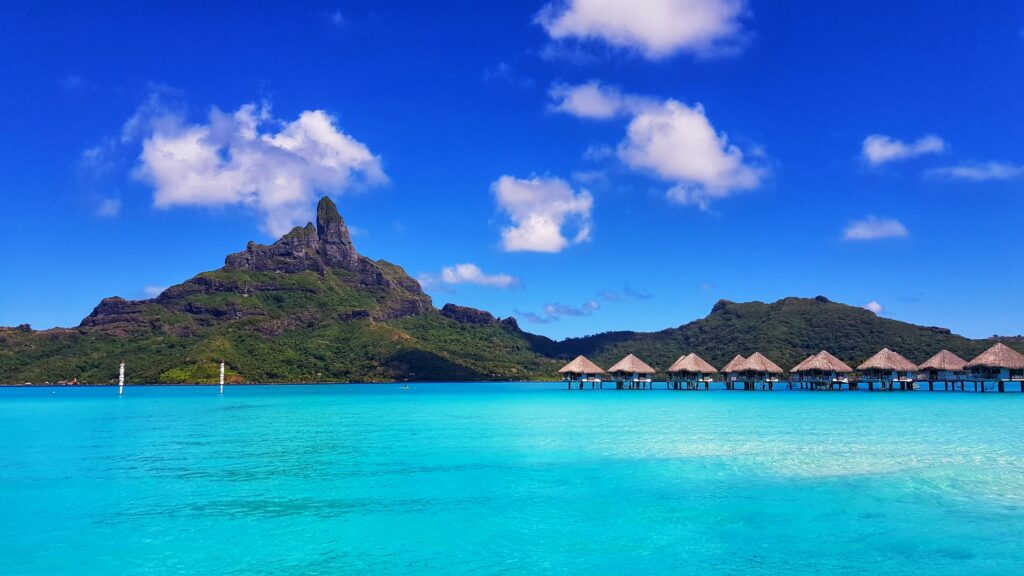
Papeete, Tahiti, French Polynesia
Papeete, Tahiti, French Polynesia
Overview
Arrival 06:00 / Departure 19:00
If you have ever dreamt up your ideal island holiday, we suspect it goes something like this: Soapy blue seas? Check. Sparkling white beaches? Check. Thatched wooden huts, gently sloping palm trees and kaleidoscopic marine life? Check, check and check. And yet, even by ticking every box, first time viewing of Bora Bora still beggars belief. This tropical hideaway less than 12 m2 in the heart of the South Pacific has been toping travel wish lists for years. Long considered the realm of honeymooners – spectacularly romantic sunsets are a speciality – Bora Bora is not just for wandering with your love. If the prismatic shades of blue of the world’s most beautiful lagoon do not fill you up, then perhaps underwater scooters and aqua Safaris will charge your batteries. If exploring Bora Bora’s lush hinterland is more your glass of tequila sunrise, then trips around the island (often stopping off at the celebrity haunt Bloody Mary Restaurant & Bar) are a must. Bora Bora’s peaceful ambience has not always been the case. The island was a US supply base, known as “Operation Bobcat” during WWII. During this time, Bora Bora was home to nine ships, 20,000 tons of equipment and nearly 7,000 men. Eight massive 7-inch naval cannons were installed around the island, all but one of which is still in place. Although little is known of the history of the island, it is known that Bora Bora was called Vava’u in ancient times. This supports belief that the island was colonised by Tongans prior to French annex in 1888.

Day at Sea
Day at Sea
Overview
International Waters
Days at sea are the perfect opportunity to relax, unwind and catch up with what you’ve been meaning to do. So whether that is going to the gym, visiting the spa, whale watching, catching up on your reading or simply topping up your tan, these blue sea days are the perfect balance to busy days spent exploring shore side.

Aitutaki, Cook Islands
Aitutaki, Cook Islands
Overview
Arrival 10:00 / Departure 18:00
When Lonely Planet co-founder describes somewhere as “the world’s most beautiful island” you can be sure that you are in for a treat. Incredible Aitutaki, inspiring Aitutaki, unbelievable, idyllic and unimaginable, there are simply not enough superlatives to describe quite how amazing Aitutaki is. Brought to light in 1779 by Captain Bligh, the Mutiny on the Bounty meant that Aitutaki has something of a bloodthirsty history. While Europeans missionaries eventually settled on the island in the 19th century (evidenced by the white, coral-encrusted walls of the many churches) the island’s Polynesian history dates to around 900AD. Traditional songs and dances from this period still exist (although Christian hymns, known as “imene metua” are also popular), and are performed by islanders with gusto and much pride. The island is part of the Cook Islands, one of the most secluded and romantic archipelagos in the world. With its powder white sand, warm turquoise waters and sense of casual luxury, it is easy to see why the island has earnt itself the moniker of honeymooner’s island. However, there is much more to Aitutaki than just fun in the sun. With a reef that completely encompasses a large turquoise lagoon, Aitutaki is considered one of the most spectacular diving and snorkelling destinations in the world. Added to the tropical excitement is that when entering the main village via Zodiac along a narrow channel – travellers will be greeted by a traditional and customary warrior challenge.
Day at Sea
Day at Sea
Overview
International Waters
Planet Earth is divided into 24 different time zones and regardless of where you are on the planet, the time and date always changes at midnight. So, for those who travel westwards, time moves seemingly “slower” over the time zones gaining one hour per time zone crossed, but you suddenly find yourself one day older when crossing the date line from the Western to the Eastern Hemisphere since you have to adjust for the time “gained”! Just to confuse matters even further, the IDL (International Date Line) is arbitrary, and countries can request to move it as they please! For two hours of every day (between 10 am and 12 pm GMT), the world has three different dates, meaning that when it is 11.30 pm on Sunday in American Samoa (GMT-11), it will be 6.30 am on Monday in New York City (GMT-4) and 12.30 am on Tuesday in Kiritimati, Line Islands (GMT+14)!
Days at sea are the perfect opportunity to relax, unwind and catch up with what you’ve been meaning to do. So whether that is going to the gym, visiting the spa, whale watching, catching up on your reading or simply topping up your tan, these blue sea days are the perfect balance to busy days spent exploring shore side.

Nuku'alofa, Tongapatu, Tonga
Nuku'alofa, Tongapatu, Tonga
Overview
Arrival 08:00 / Departure 23:00
Nukuʿalofa is the capital of Tonga which sits beautifully on the north shore of Tongatapu Island in the Pacific Ocean. This peaceful destination is lined with blissful powder white beaches and crisp turquoise seas which are populated by a large and lively coral reef. First discovered by the explorer James Cook in 1777, it is the only island in the South Pacific to have evaded colonisation over the years and its name translates to “home of love”. This is evident in the friendly welcome you’ll get from happy locals along with the deeply relaxed vibe. Wander into town to visit the Talamahu Market. You’ll find delightful hand carved arts and crafts, woven baskets, jewellery and a large selection of fresh fruits on offer. The sea is ideal for snorkelling with underwater volcanic caves to explore, shipwrecks and a profusion of colourful fish to spot. Just thirty minutes out to sea are the spectacular Mapu'a'a Vaea Blowholes. Known as “The Chief’s Whistles” by locals, water blasts 30 meters into the sky from a concertina of coral rock which creates pockets of pressure.
Day at Sea
Day at Sea
Overview
International Waters
Days at sea are the perfect opportunity to relax, unwind and catch up with what you’ve been meaning to do. So whether that is going to the gym, visiting the spa, whale watching, catching up on your reading or simply topping up your tan, these blue sea days are the perfect balance to busy days spent exploring shore side.

Savusavu, Fiji
Savusavu, Fiji
Overview
Arrival 08:00 / Departure 16:00
An island paradise of rich colours and verdant scenery, Savusavu is a staggeringly beautiful, and gloriously undeveloped South Pacific island. Fiji's more tourist-orientated Viti Levu island is close by, but the joy of Savusavu comes in venturing off the beaten track and delving into the heart of a tropical idyll, where hidden villages welcome you with open arms. Revelling in its nickname as Fiji's hidden paradise, the country's second-largest island is a place of adventure - and geothermically fuelled relaxation. Mud baths burble and hot springs simmer across the island, adding to the sense that the land itself is alive and breathing. Trek the rainforests, with parrots chattering overhead, and see the colours splashed across the green landscapes and gardens by orchids and water lilies. Gardens overlook the gorgeous Savusavu Bay, and you can walk between hundreds of palm varieties and trees that droop, laden with exotic fruits. The sprawling rainforest opens up briefly to reveal Savusavu, the island’s compact main town. Thriving coral reeds add yet more colour and life to the surrounding seabeds, with spectacular snorkelling opportunities, and the chance to spot bottlenose and spinner dolphins skipping and skimming acrobatically across the tips of the waves. The fertile environment also encourages black lip pearl oysters to thrive here, leading to the development of one of the island’s treasured exports, beautiful black pearls. Visit the bay’s farm to find out more.

Day at Sea
Day at Sea
Overview
International Waters
Days at sea are the perfect opportunity to relax, unwind and catch up with what you’ve been meaning to do. So whether that is going to the gym, visiting the spa, whale watching, catching up on your reading or simply topping up your tan, these blue sea days are the perfect balance to busy days spent exploring shore side.

Mystery Island, Anelghowhat, Vanuatu
Mystery Island, Anelghowhat, Vanuatu
Overview
Arrival 09:00 / Departure 18:00
Inyeug Island, better known as Mystery Island, is part of the Tafea Province of Vanatu, the southernmost collection of islands. This is a picturesque island with large rounded cliffs jutting from the water. The cliffs create protected lagoons with some of the lightest, clearest waters in the world. The island is, with the exception of an airstrip used twice weekly, made up entirely of beaches and reefs. This place is ideal for relaxing, swimming and snorkelling in the tranquil waters, where many diverse tropical fishes hide between the corals.
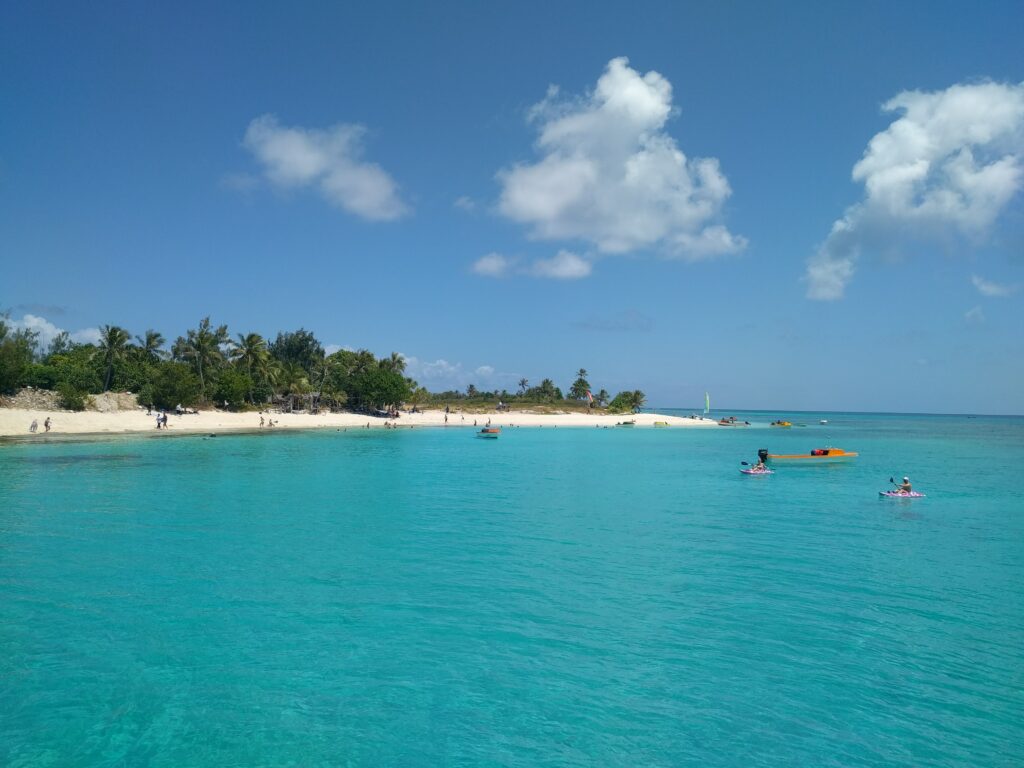
Noumea, New Caledonia
Noumea, New Caledonia
Overview
Arrival 12:13 / Departure 18:00 (Overnight)
Perched overlooking the life-filled reefs of Noumea Lagoon, Noumea is the vibrant and colourful capital of New Caledonia. Catch some shade in the city’s centre, below Coconut Palm Square, and absorb the vibrant fusion of French and Kanak cultures. Or take a leisurely open-air stroll along the waterfront, where white boats bob and jostle on the lapping waters. Bring your tongs - the local word for flipflops - there will be plenty of time to swim, sunbathe and leaf through paperbacks on dazzling beaches. Noumea is a perfect jumping-off point for serene island adventures too. Enjoy a voyage to the island paradise of Amedee Isl - a tiny green land with a narrow historic lighthouse rocketing up from its centre. Climb 247 steps for the stunning view of the blotchy blue waters all around. Or, explore the waters to swim among turtles and orange clownfish. Set among the New Caledonian barrier reef, there are incredible diving opportunities, and glass-bottom boats offer you a dry window into the underwater world. Kick back on some of the softest sands imaginable and enjoy glorious sea views from the inviting shade of coconut palms. More island jaunts like Illot Maitre - which translates as the Master Isle – tempt, where you’ll find idyllic strings of stilted bungalows laced across the crystal-clear, shallow waters. Swim in the sparkling sea, and sprawl across the white sand beaches that are waiting. Back in the city, try soft coconut crab, following a starter of New Caledonian prawns. Bougna is the traditional Melanesian meal of choice, and a social experience where locals share a mix of vegetables and chicken in coconut milk, slow-cooked for hours in a bed of banana leaves.

Day at Sea
Day at Sea
Overview
International Waters
Days at sea are the perfect opportunity to relax, unwind and catch up with what you’ve been meaning to do. So whether that is going to the gym, visiting the spa, whale watching, catching up on your reading or simply topping up your tan, these blue sea days are the perfect balance to busy days spent exploring shore side.

Norfolk Islands
Norfolk Islands
Overview
Arrival 08:00 / Departure 17:00
750 kilometers northwest of New Zealand and 1400 kilometers east of Gold Coast, NSW, Norfolk Island, an External Territory of Australia consisting of Norfolk Island and uninhabited Phillip Island and Nepean Island, was self-governed until 2015 when it came under the laws of New South Wales. Discovered by Captain Cook in 1774, the island has had different settlements, starting with Polynesians that had already disappeared before Cook’s visit, followed by convicts and soldiers in 1788. This penal colony was abandoned in 1814 yet used again from 1825 to 1855. The Kingston and Arthur’s Vale Historic Area, with its elegantly restored Georgian houses at Quality Row, is among the 11 historic Australian Convict Sites, UNESCO World Heritage. Most of today’s population can be traced back to the 194 descendants of the Bounty mutineers and their Tahitian wives who had left Pitcairn for Norfolk in 1856. In 1867 the Church of England’s Melanesian Mission moved its headquarter to Norfolk. A few years later St Barnabas Chapel was built of stone from the ruins of the New Gaol. The wooden seats have beautiful mother-of-pearl inlay work in Solomon Island style. 14% of the island is national park and the Botanical Gardens feature plants that are endemic to Norfolk Island. Golden Whistlers, Sacred Kingfisher and Norfolk’s symbolic Green Parrot can often be seen and heard. Norfolk and close by Phillip and Nepean Islands are important breeding sites for seabirds such as Red-tailed Tropicbirds, Sooty Terns, Wedge-tailed Shearwaters, and Masked Boobies.
Day at Sea
Day at Sea
Overview
International Waters
Days at sea are the perfect opportunity to relax, unwind and catch up with what you’ve been meaning to do. So whether that is going to the gym, visiting the spa, whale watching, catching up on your reading or simply topping up your tan, these blue sea days are the perfect balance to busy days spent exploring shore side.

Bay of Islands, New Zealand
Bay of Islands, New Zealand
Overview
Arrival 08:00 / Departure 19:00
The Tasman Sea on the west and the Pacific Ocean on the east meet at the top of North Island at Cape Reinga. No matter what route you take, you'll pass farms and forests, marvellous beaches, and great open spaces. The East Coast, up to the Bay of Islands, is Northland's most densely populated, often with refugees from bigger cities—looking for a more relaxed life—clustered around breathtaking beaches. The first decision on the drive north comes at the foot of the Brynderwyn Hills. Turning left will take you up the West Coast through areas once covered with forests and now used for either agricultural or horticulture. Driving over "the Brynderwyns," as they are known, takes you to Whangarei, the only city in Northland. If you're in the mood for a diversion, you can slip to the beautiful coastline and take in Waipu Cove, an area settled by Scots, and Laings Beach, where million-dollar homes sit next to small Kiwi beach houses. An hour's drive farther north is the Bay of Islands, known all over the world for its beauty. There you will find lush forests, splendid beaches, and shimmering harbors. The Treaty of Waitangi was signed here in 1840 between Māoriand the British Crown, establishing the basis for the modern New Zealand state. Every year on February 6, the extremely beautiful Waitangi Treaty Ground (the name means weeping waters) is the sight of a celebration of the treaty and protests by Māori unhappy with it. Continuing north on the East Coast, the agricultural backbone of the region is even more evident and a series of winding loop roads off the main highway will take you to beaches that are both beautiful and isolated where you can swim, dive, picnic, or just laze. . The West Coast is even less populated, and the coastline is rugged and windswept. In the Waipoua Forest, you will find some of New Zealand's oldest and largest kauri trees; the winding road will also take you past mangrove swamps. Crowning the region is the spiritually significant Cape Reinga, the headland at the top of the vast stretch of 90 Mile Beach, where it's believed Māori souls depart after death. Today Māori make up roughly a quarter of the area's population (compared with the national average of about 15%). The legendary Māori navigator Kupe was said to have landed on the shores of Hokianga Harbour, where the first arrivals made their home. Many different wi (tribes) lived throughout Northland, including Ngapuhi (the largest), Te Roroa, Ngati Wai, Ngati Kuri, Te Aupouri, Ngaitakoto, Ngati Kahu, and Te Rarawa. Many Māorihere can trace their ancestry to the earliest inhabitants
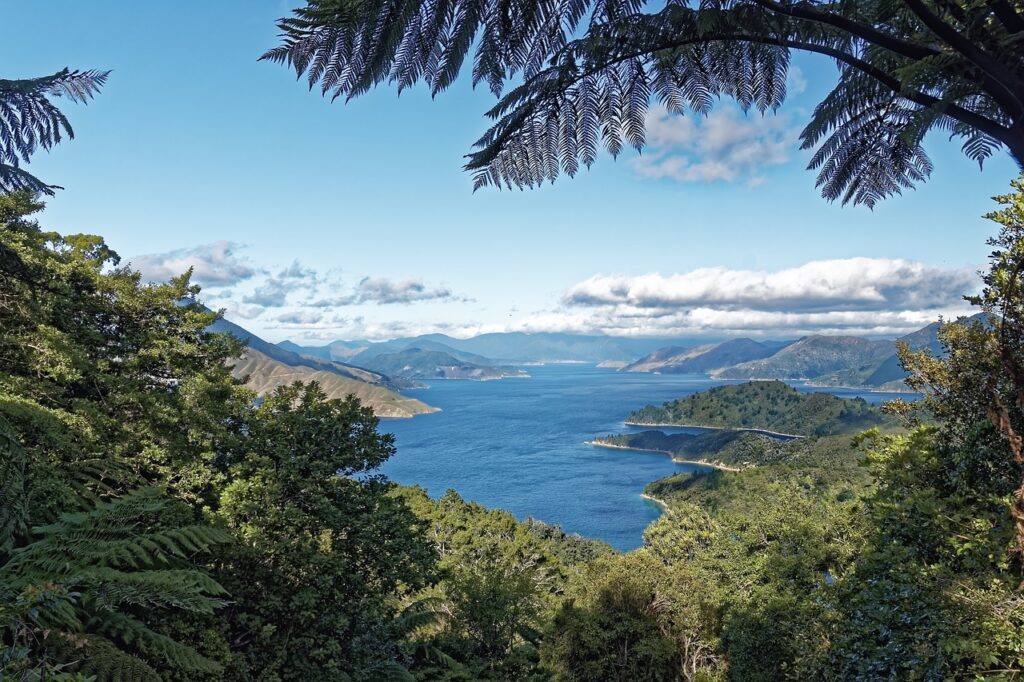
Auckland, New Zealand
Auckland, New Zealand
Overview
Arrival 07:00 / Departure 13:30
Blending beachy recreation with all the delights of a modern, diverse and thoroughly multicultural city, Auckland sits on the lucid blue-green waters of New Zealand’s north island. Known as the ‘City of Sails’, its two harbours will tempt you with waterfront walks, and the chance to breathe fresh sea air deep into your lungs while absorbing spectacular views of Auckland’s grand harbour bridge’s span. Take in the true scale of Auckland’s magnificent cityscape by ascending 192 metres to the Sky Tower, and looking out over the city’s gleaming silver towers, which reflect on the abundant waters below. Views over the bay and adjacent islands await, and you can share elegant cocktails at this dizzying height, above the mingling yachts of Viaduct Harbour. Immerse yourself in the rich history and culture of the area at Auckland Art Gallery, Toi o Tāmaki. Set beside tranquil fountains and handsomely landscaped flowerbeds of Albert Park, the French-Renaissance building houses New Zealand’s most extensive art collection, and exhibits works from Māori and Pacific artists. New Zealand is world-renowned for its captivating natural scenery, and day trips across the sparkling bays, to nearby islands like Waiheke, Tiritiri Matangi, and Rangitoto, are always tempting. Discover lava caves, grape-laden vineyards and flourishing wildlife in the Hauraki Gulf’s islands. You’ll also find an exceptional 360-degree panorama over the city, to the horizon beyond, from the heights of ancient Mount Eden. The spectacular dormant volcano rises improbably from a city suburb, and also lends its name to Eden Park – the unusual, translucent stadium of New Zealand’s mighty All Blacks.
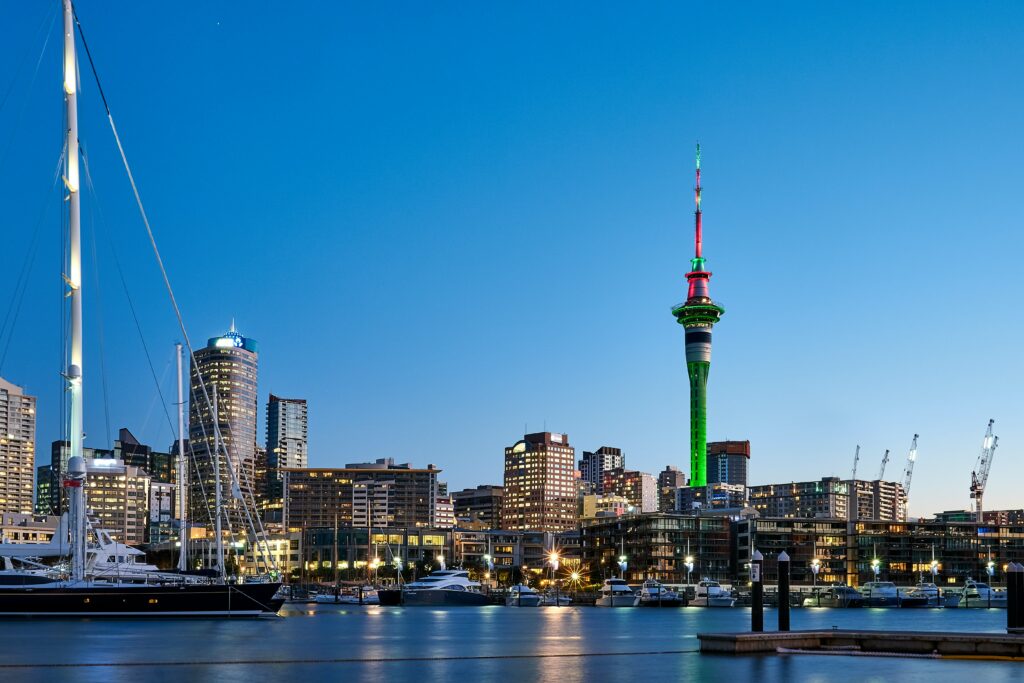
Day at Sea
Day at Sea
Overview
International Waters
Days at sea are the perfect opportunity to relax, unwind and catch up with what you’ve been meaning to do. So whether that is going to the gym, visiting the spa, whale watching, catching up on your reading or simply topping up your tan, these blue sea days are the perfect balance to busy days spent exploring shore side.

Hobart, Tasmania
Hobart, Tasmania
Overview
Arrival 09:00 / Departure 23:00
Mount Wellington's looming, cloud-wisped form is an ever-present sight as you explore booming Hobart, the cosmopolitan capital of Australia's most southerly state. A former British penal colony, nowadays Australia’s second-oldest city is a place to live the free and easy life. Encircled by dramatic cliffs, landscaped gardens and rolling vineyards, Hobart is also well stacked with cultural pursuits including museums, and respected - if controversial - galleries plastering new and old art to their walls. With fresh sea breezes and a fabulous location, Hobart is a creative place, where you can browse the produce of local artisans in Saturday's massive Salamanca Market - which draws visitors from all across Tasmania and beyond. Eat at waterfront restaurants, or rise up Mount Wellington's slopes to appreciate the remoteness of Hobart's location. From this elevated platform, you can look down across views of flowing forests, undulating mountains and endless ocean swallowing up the city. Further away, animal sanctuaries introduce you to the island's famous inhabitants, including the famous Tasmanian devil. Thirsty? Hobart has a long brewing tradition - so enjoy a refreshing ale poured from the country's oldest brewery. The climate's blend of generous sunshine and cool Antarctic breezes helps Hobart to produce its acclaimed wines, and thick clumps of pinot noir grapes hang from vineyards dotted along the valleys nearby. Taste the wines, accompanied by a platter of artisan cheese and sausage. Whiskey aficionados aren't left in the cold either, with international award-winning distilleries close by.

Day at Sea
Day at Sea
Overview
International Waters
Days at sea are the perfect opportunity to relax, unwind and catch up with what you’ve been meaning to do. So whether that is going to the gym, visiting the spa, whale watching, catching up on your reading or simply topping up your tan, these blue sea days are the perfect balance to busy days spent exploring shore side.

Melbourne, Australia
Melbourne, Australia
Overview
Arrival 08:00 / Departure 18:00
Australia’s metropolitan cultural capital is a refined, contemporary and richly liveable city - which has a blend for every taste. The smells of freshly ground, artisan coffees fill the streets of this hip, youthful city, which is generously sprinkled with fine dining establishments, art galleries, and absorbing museums. With an airy outdoor lifestyle, Melbourne is a vibrant global hub of fashion, fun and festivities. Multicultural and diverse, Victoria’s capital is crisscrossed by narrow alleys and splashed with street art. It’s fair to say Melbourne’s bearded baristas take their coffees seriously. Settle in to sample the unique coffee culture that is an essential part of Melbourne life. Looking for something a little stronger? The city’s rooftop bars come alive with clinking cocktails as the sun sets. A world leader in culinary arts, take your seat at award-winning restaurants, and sample world foods alongside delicious wines, cultivated in the vineyards of the surrounding valleys. Savour a glass while cruising the arching Yarra River, for an unbeatable introduction to Melbourne. An outdoor city, it’s no surprise that Melbourne is one of Australia’s sporting giants. The vast bowl of Melbourne Cricket Ground serves as the city’s sporting cathedral – squeezing in over 100,000 fans and hosting various sports on its hallowed, oval turf. Whether it’s the rumble of hoofs during the Melbourne Cup, revs of engines during the Formula One, or thwacks of tennis balls during the Australian Open - few places can boast such a comprehensive list of high-profile sporting appeals.
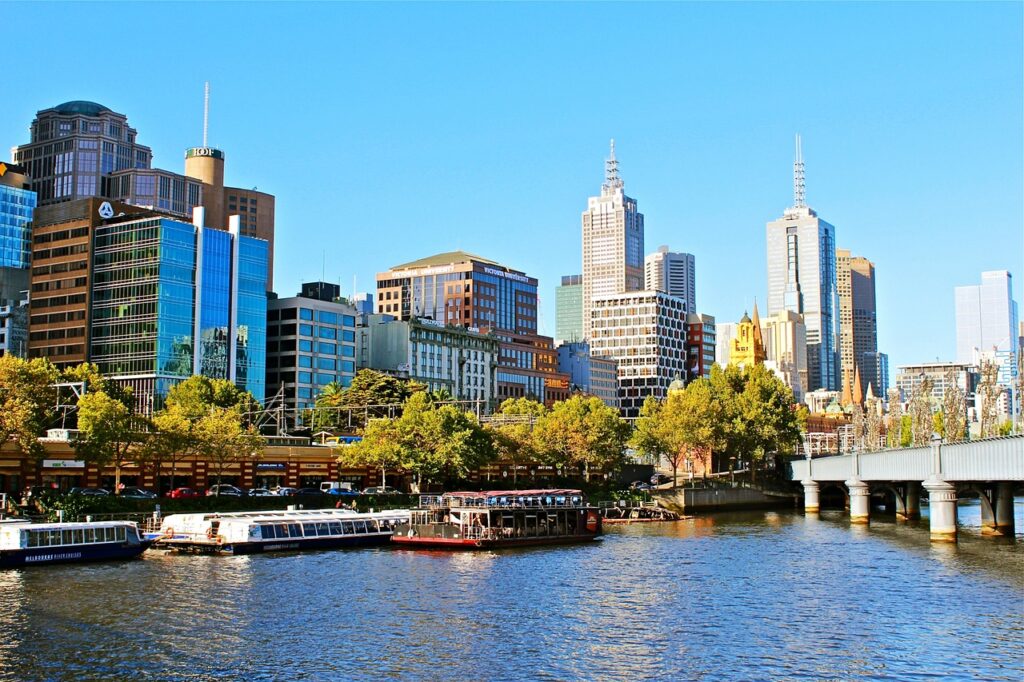
Day at Sea
Day at Sea
Overview
International Waters
Days at sea are the perfect opportunity to relax, unwind and catch up with what you’ve been meaning to do. So whether that is going to the gym, visiting the spa, whale watching, catching up on your reading or simply topping up your tan, these blue sea days are the perfect balance to busy days spent exploring shore side.

Adelaide, Australia
Adelaide, Australia
Overview
Arrival 08:00 / Departure 23:00
For those of you that might think that Adelaide lacks behind its coastal counterparts in terms of culture and creativity, think again. Adelaide is a thriving urban city with bright, leafy alleys that beg to be explored. The city’s labyrinthine lanes and alleys are bursting with bars and eateries, serving everything from local craft beer to a modern Australian cuisine. Uber aware of their carbon footprint, Adeladians like to keep things close to home, so expect lots of local produce which is abundant, fresh and delicious. Unsurprisingly, Barossa wine from the neighbouring valley features prominently on wine lists everywhere. Naturally, a lot of life centres around the lovely beaches, which are home to surfers, sheltered waters and wide boulevards. The coast is blessed with acres of parkland, perfect for lazing the afternoon away. Many of Australia’s most beautiful (and historic) buildings can be found within the boundaries of the city including the handsomely-restored former Railway Building, numerous stately Colonial buildings, St. Peter's Cathedral, the grand old Parliament Buildings and nearby Government House, which all make a worthy addition to any visit. Adelaide is of course known for its wide diversity of faiths, and as such carries its nickname “the city of churches” with pride. Contrary to other Australian penal settlements, Adelaide was a free settlement. This meant that it was also a state free from religious persecution, leading rise to the construction of many churches.
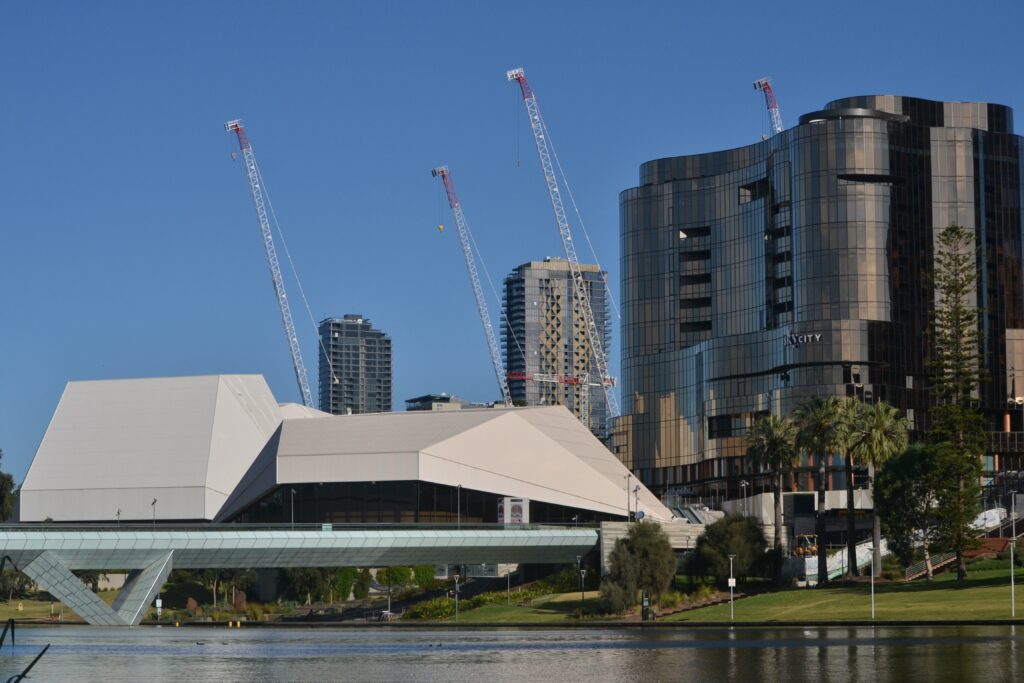
Kangaroo Island, Australia
Kangaroo Island, Australia
Overview
Arrival 08:00 / Departure 19:00
Kangaroo Island is with 1,740 square miles the third largest island off the coast of Australia. It is 96 miles long and 34 miles wide, and known for its outstanding natural beauty. Due to its remote location, Kangaroo Island was less affected than the mainland by the impact of European development. To this day, the island is rich in diverse flora and fauna seldom found elsewhere. As one of the world’s last unspoiled wilderness places, about 30 percent of the island has been designated as National Parks. The most important one is Flinders Chase at the western end of Kangaroo Island, with Seal Bay Conservation Park following close behind. Its large sandy beach and dune area is home to Australian sea lions where they come to rest and nurse their young. Kingscote, formerly known as Queenscliffe, is the largest town on the island and its main supply depot. Tourism is a significant element in the local economy. A mix of attractive small townships, wildlife sanctuaries and fascinating wilderness areas guarantee a steady stream of visitors each year.
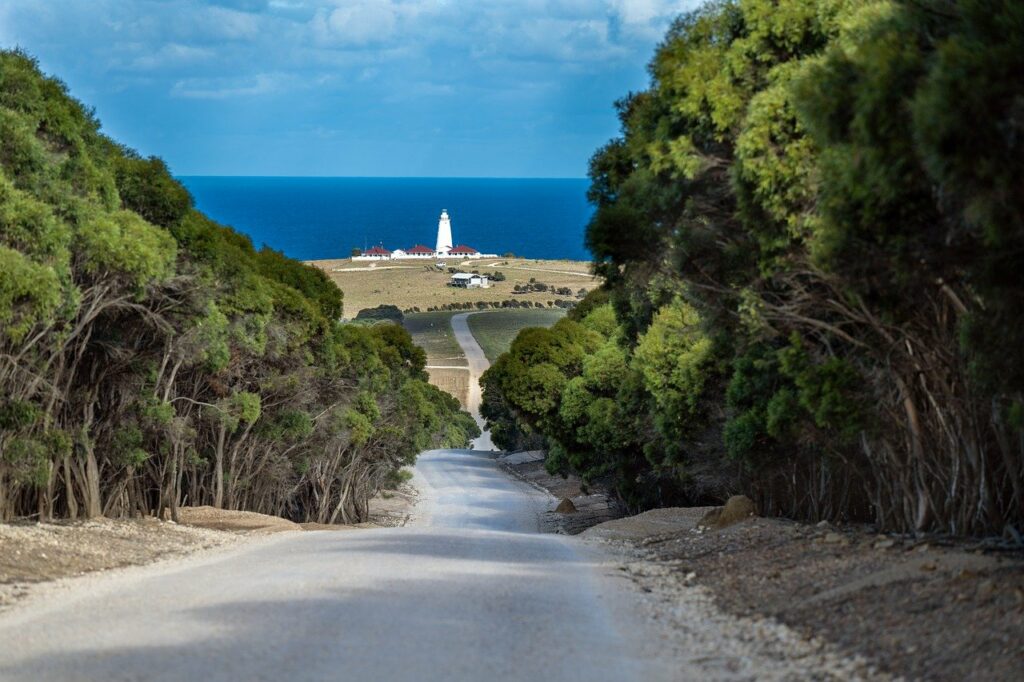
Port Lincoln, Australia
Port Lincoln, Australia
Overview
Arrival 08:00 / Departure 19:00
Known as the seafood capital of Australia, Port Lincoln is a foodie paradise. Home to Australia's largest fishing fleet, numerous seafood restaurants and a prized local wine region, this is one destination where it pays to travel with your taste buds. The city’s traditional name in Barngala is ‘Kallinyalla’ (pronounced Galinyalla), literally translating as ‘sweet waters’. That should give you some indication of how seriously the ocean is taken in these parts – it provides employment, entertainment and experiences that are just unseen in other parts of the country. Add in contrasting coastal landscape that ranges from quiet coves to surf happy beaches to rugged oceanic coastline, and you’ll soon see why Port Lincoln is fast becoming one of Australia’s favourite places. The city is located on the lower Eyre Peninsula, on the shore of Boston Bay. Discovered by Matthew Flinders in 1802, Port Lincoln was once under consideration to become the state’s capital. However, a lack of freshwater mired that idea, forcing settlers to look 280 kilometres east, to Adelaide. While European discovery is fairly recent, historians should note that the region had been inhabited by Aboriginal groups including the Nauo (south-western Eyre), Barngarla (eastern Eyre), Wirangu (north-western Eyre) and Mirning (far-western Eyre) for over 40,000 years. For those who want to look beyond the city boundaries, Port Lincoln is home to some extremely diverse and abundant nature, and a trip to the National Park is well worth it.
Day at Sea
Day at Sea
Overview
International Waters
Days at sea are the perfect opportunity to relax, unwind and catch up with what you’ve been meaning to do. So whether that is going to the gym, visiting the spa, whale watching, catching up on your reading or simply topping up your tan, these blue sea days are the perfect balance to busy days spent exploring shore side.

Esperance, Australia
Esperance, Australia
Overview
Arrival 08:00 / Departure 18:00
Esperance and the Recherche Archipelago sheltering Esperance Bay received their name in 1792, when a French expedition under d’Entrecasteaux looked for shelter from a storm. Ten years later Matthew Flinders took refuge at Lucky Bay, some 30 kilometers southeast of Esperance near Cape Le Grand, another feature named during the French visit. It was not until the 1860s that settlement began and by the 1890s Esperance was known as the “Gateway to the Goldfields” further inland. Today some 12,000 residents live in Esperance. The town is southeast Western Australia’s only port and as such quite important for grain and mineral exports. Tourism is a major factor as Esperance and its surrounding area have such unusual attractions as a museum featuring debris from Skylab’s 1979 return to earth, a full-size replica of Stonehenge, the Pink Lake –which formerly used to be pink- an IBA for Hooded Plovers and Banded Stilts, several national parks and some of the whitest beaches in Australia. Lucky Bay is one of the iconic places, as kangaroos are regularly seen on the beach sunbathing.
Day at Sea
Day at Sea
Overview
International Waters
Days at sea are the perfect opportunity to relax, unwind and catch up with what you’ve been meaning to do. So whether that is going to the gym, visiting the spa, whale watching, catching up on your reading or simply topping up your tan, these blue sea days are the perfect balance to busy days spent exploring shore side.

Busselton, Australia
Busselton, Australia
Overview
Arrival 08:00 / Departure 18:00
Bordering the Indian Ocean, Geographe Bay’s Busselton has a Mediterranean style climate. The region features national parks, towering forests, caves, historic lighthouses and some of the best surfing beaches in the country. Other attractions include wineries and micro-breweries in the Margaret River wine region to the south. Busselton’s iconic jetty –at over 1.8 km the longest wooden jetty in the southern hemisphere- has an ‘Underwater Observatory’ that descends 8 meters to the ocean floor via a spiral staircase to see tropical and sub-tropical corals, sponges, fish and invertebrates.
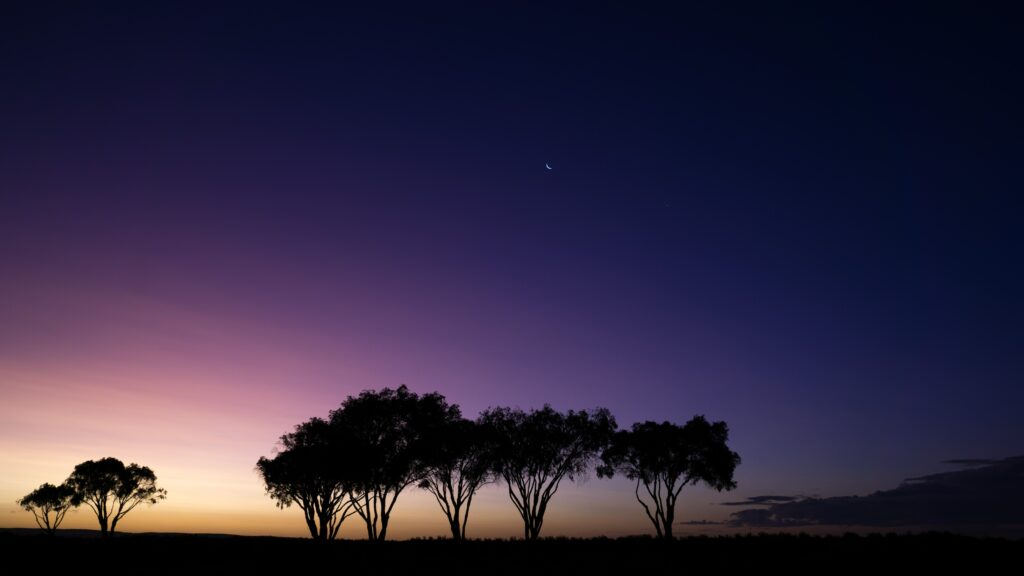
Freemantle (Perth), Australia
Freemantle (Perth), Australia
Overview
Arrival 07:00 / Departure 19:00
Coming in at number seven on Lonely Planet’s list of best places to live, Fremantle has finally begun to shake off the shadow of neighbouring big brother Perth. With just 20 kilometres separating the two cities, Perth, with its happy hippie vibe has long been the big pull for visitors to the region. But Fremantle’s colourful past and bright future gives Perth as good as it gets. The coastal city has undergone a complete revamp since the America’s Cup thrust Fremantle into the spotlight in 1987. Over AUS$ 1,3 billion has been poured into revamping the city, and the fruits of the city’s labour are ripe for picking. Investment in the arts has brought Fremantle to the fore of thriving urban culture, while generous grants for small businesses has led to groovy live-music rooms, hipster bars, boutique hotels, left-field bookshops, craft-beer breweries, Indian Ocean seafood shacks amid the buskers and beaches. If that doesn’t not sound like your glass of beer, we guarantee a stroll along the wooden riverside walkway will change your mind. The city also enjoys another, rather different status. Fremantle was one of Australia’s penal cities, vestiges of which can still be found in Fremantle Prison. Almost 10,000 convicts were condemned to life imprisonment here between 1850 and 1868, but the prison remained in use until 1991. Today, the memorable sandstone building is a UNESCO World Heritage Site and at just 15 minutes from port is well worth a visit. Just don’t forget your get out of jail free card.
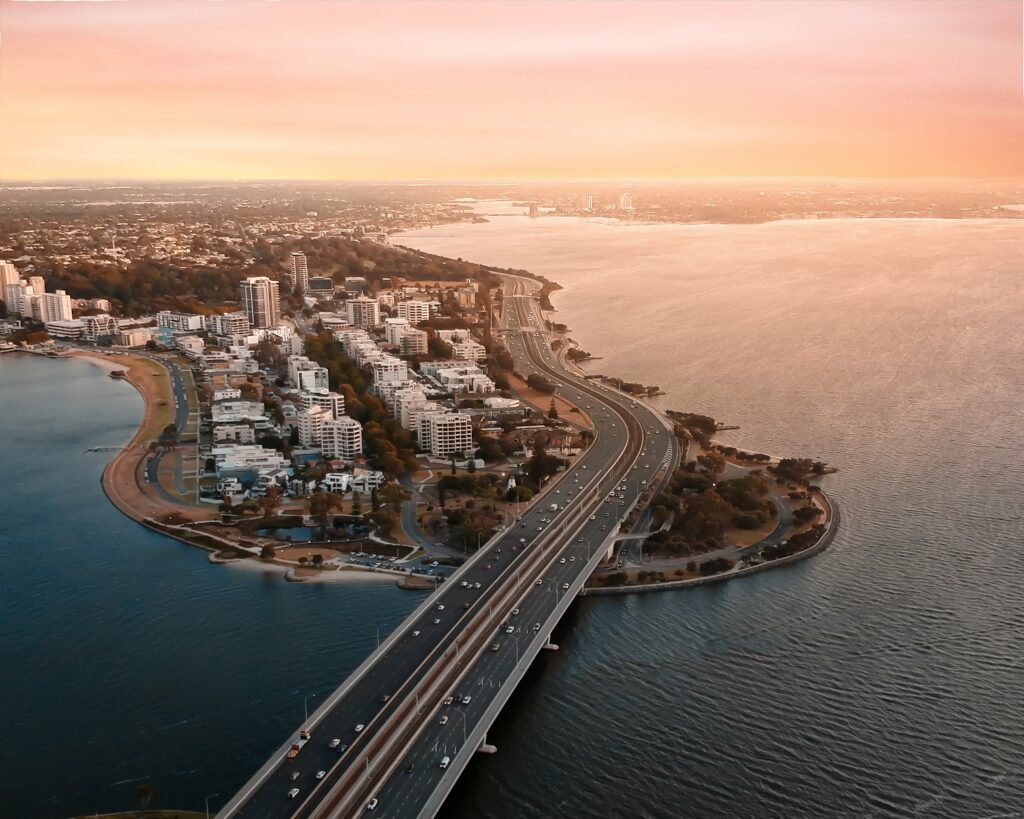
Day at Sea
Day at Sea
Overview
International Waters
Days at sea are the perfect opportunity to relax, unwind and catch up with what you’ve been meaning to do. So whether that is going to the gym, visiting the spa, whale watching, catching up on your reading or simply topping up your tan, these blue sea days are the perfect balance to busy days spent exploring shore side.

Exmouth, Australia
Exmouth, Australia
Overview
Arrival 08:00 / Departure 18:00
Ningaloo coral reef is a fringing reef that abuts the mainland shoreline south of the town of Exmouth. At 300 km (185 miles) long, it is the longest and most pristine fringing reef in the world. The coral even extends into the intertidal zone. Much of the limestone coast is in the arid Cape Range National Park. This is where the desert meets the coral, and both are included in the Ningaloo Coast World Heritage Area. An arid climate means little rain and soil runs off from the land, leaving the sea turquoise clear and making snorkelling a dream. Within Cape Range National Park, you will appreciate wave-cut limestone escarpments and rugged gorges like Yardie Creek. Cape Range has a diversity of eco-systems including eucalypt woodlands, acacia scrublands and spinifex grasslands. Australia is a land of lizards and here skinks, dragons, monitors and geckos are in their element. Euros (Hill Kangaroos) are common although they, and their smaller cousins the Black-flanked Rock-wallabies, hide in the shade on hot days. It is a busy calendar at Exmouth. During January/February thousands of sea turtles come ashore to nest. In March to July Whale Sharks gather offshore. From June to October migrating Humpback Whales heading south pass close to shore. June to August is the peak time for a colourful variety of wildflowers like the green Bird Flower, crimson Sturts Desert Pea and purple Yardie Morning Glory which is found nowhere else. There is always something to see where the wet and dry paradises meet.
Day at Sea
Day at Sea
Overview
International Waters
Days at sea are the perfect opportunity to relax, unwind and catch up with what you’ve been meaning to do. So whether that is going to the gym, visiting the spa, whale watching, catching up on your reading or simply topping up your tan, these blue sea days are the perfect balance to busy days spent exploring shore side.

Broome (Kimberley), Australia
Broome (Kimberley), Australia
Overview
Arrival 08:00 / Departure 19:00
Gateway to the oldest and most elusive of all Australia’s nine regions, Broome is where your Kimberley adventure begins. The ancient landscape has long held travellers spellbound: The Kimberley is three time larger than England but has a population of just 35,000, is over 65,000 years old and is home to 2,000 km of coastline. Almost impenetrable, incredibly remote, the red baked earth, prolific wildlife, majestic canyons and swimming holes are the stuff of Australian wilderness dreams. English explorer William Dampier was the first explorer to set foot in Broome in 1668. However, the land had long been used as a trading route between east and west Kimberley for Aboriginal families. These semi-nomadic tribes respected strict unwritten rules regarding ownership of the land. The Yawuru people remain the Native Title holders for the township of Broome to this day. Broome itself has over 84 Aboriginal communities affiliated to it, 78 of which are considered remote. The city grew from its nascent pearling industry of the late 19th century. Pearl diving was dangerous in the waters surrounding Broome and for many years divers were limited to Aboriginal slaves, skin divers who faced cyclones, sharks, crocodiles, ear and chest infections in order to bring up as many pearl shells as possible for their masters. Natural pearls were rare and extremely valuable, and when found, were placed in a locked box. At the peak of its industry, around 1914, Broome was responsible for 80% of the world’s pearl trade.

Day at Sea
Day at Sea
Overview
International Waters
Days at sea are the perfect opportunity to relax, unwind and catch up with what you’ve been meaning to do. So whether that is going to the gym, visiting the spa, whale watching, catching up on your reading or simply topping up your tan, these blue sea days are the perfect balance to busy days spent exploring shore side.

Darwin, Australia
Darwin, Australia
Overview
Arrival 08:00 / Departure 18:00
"Australia's capital of the north is a uniquely tropical city, and a historically isolated outpost of this vast, diverse country. Reaching up towards the equator, a full 2,000 miles from Sydney and Melbourne, the city was named in honour of Charles Darwin by the British settlers who established a frontier outpost here. With a unique history, beautiful islands nearby, and a palette of sizzling Pacific flavours, colourful Darwin is an enchanting and exotic Australian destination. Crocodiles patrol the jungled waterways and tropical rainforests around Australia's gateway to the Top End. Explore via airboat to look down on the veiny waterways of the mist-laced Kakadu National Park. The sounds of chattering birdlife and the gentle splash of fountains and waterfalls will fill your ears in George Brown Darwin Botanic Gardens. Soak it all in, before kicking back and relaxing with a picnic and a crackling barbecue. The sunshine and famous tropical pink sunsets mean many visitors naturally gravitate to the city's soft sands to relax at spots like pretty Mindil Beach, as evening approaches. The adjoining market is filled with souvenirs and crafts stands and is the perfect great place to enjoy some fiery Asian flavours. Stroll the stalls, grab some food, and crack open an ice-frosted beer as the sunset show begins. It may be remote, but Darwin found itself on the front line during the Pacific War, as the Japanese air force unloaded their bombs onto the city in 1942. This relaxed unassuming city has a deeply resilient backbone, however, and you can explore the museums to learn more of the war's impact on Darwin, as well as the devastating effects of one of Australia's worst natural disasters, Cyclone Tracy in 1973."
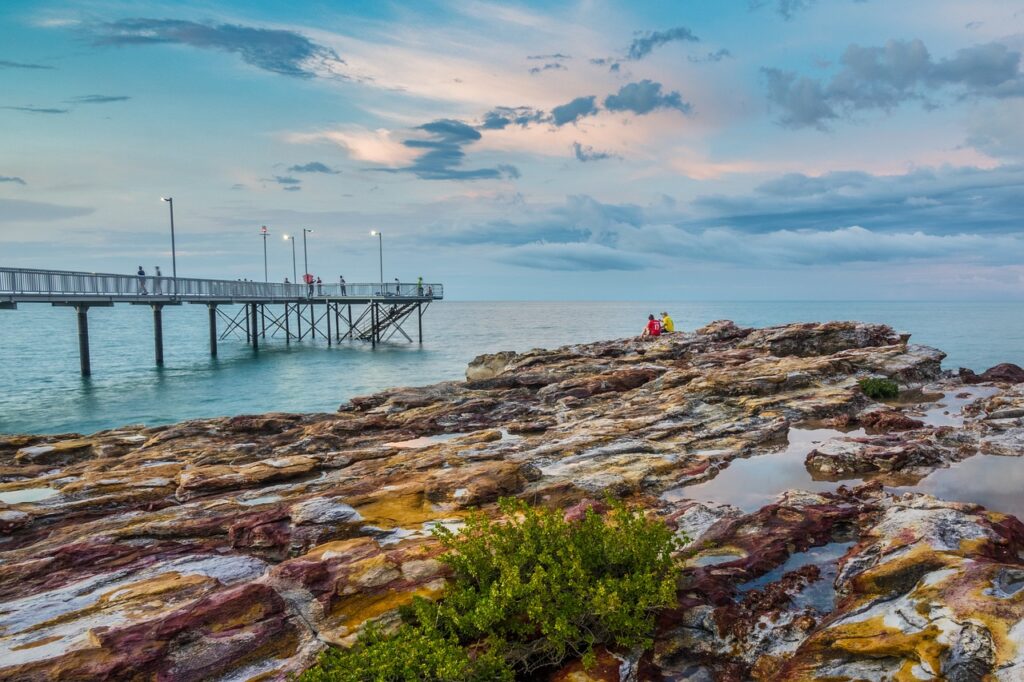
Day at Sea
Day at Sea
Overview
International Waters
Days at sea are the perfect opportunity to relax, unwind and catch up with what you’ve been meaning to do. So whether that is going to the gym, visiting the spa, whale watching, catching up on your reading or simply topping up your tan, these blue sea days are the perfect balance to busy days spent exploring shore side.

Lembar Lombok, Indonesia
Lembar Lombok, Indonesia
Overview
Arrival 09:00 / Departure 22:00
An island of startling contradictions and contrasts, Lombok exudes an aura of the staid and the rural, a genteel way of life in a quiet backwater. Located to the east and across a deep strait from its illustrious neighbor Bali, the island of Lombok offers unique culture, beautiful landscapes and a far less frenetic, pressured atmosphere than Bali. However, savvy travelers agree that Lombok’s calm existence may soon come to an end, as it is fast becoming the new "in place" after Bali. The island was once ruled by a series of Sasak princes who spent their time fending off successive invasions from Sumbawanese and Makassarese attackers. In 1740, the Balinese established a stronghold here and imposed their culture on the Sasaks. Later, Lombok came under Dutch rule until the country achieved independence. The western part of the almost circular island is well irrigated by mountain streams and artesian springs. Here Balinese and Sasaks have sculpted handsome rice terraces; Hindu temples vie for attention with glistening white mosques rising from picturesque rural villages. More dramatic is the southern coast with beautiful sandy bays set between rocky outcrops. Most of Lombok’s attractions are concentrated in the western district of the island, within a nine-mile radius of the capital, Mataram. Members of Lombok's polyglot population - Sasak, Balinese, Chinese and Arab - continue their laid-back, traditional ways.
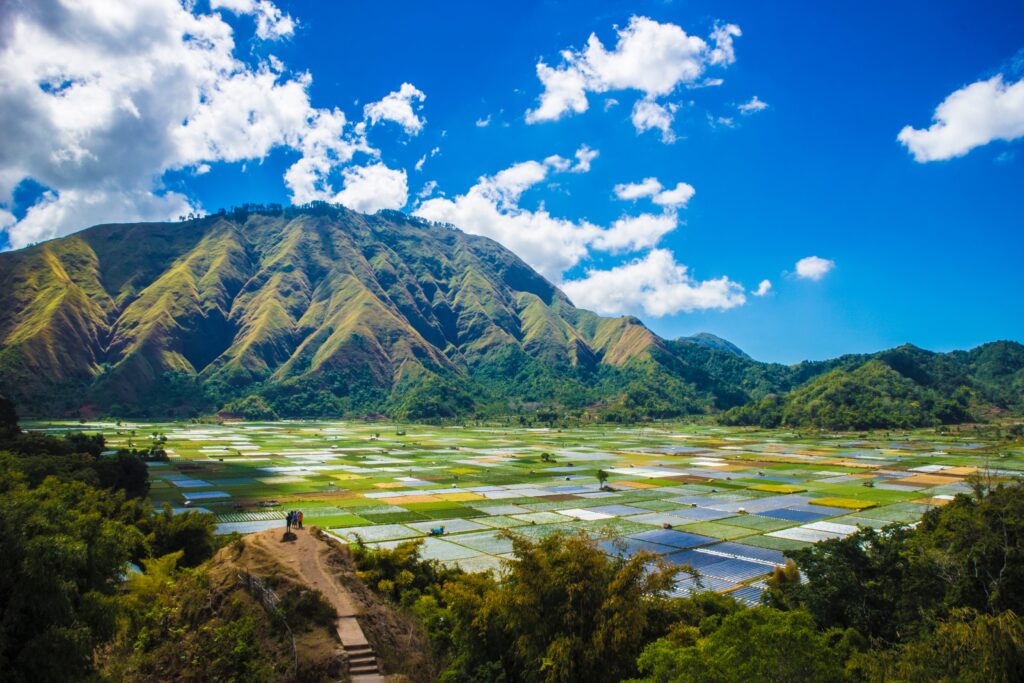
Bali, Indonesia
Bali, Indonesia
Overview
Arrival 07:00 / Departure 23:00
Bali. A.k.a. Island of the Gods, Land of a thousand temples or the World’s last paradise. As superlative as these monikers may sound, they do not do justice to the actual reality of the island. Bali is as good as everyone says – verdant mountains with terraced rice fields in one direction, black sand beaches in another and captivating people that will leave even the most seasoned traveller humbled. If you’re looking for a Garden of Eden that really does have it everything, Bali ticks all the boxes. The rich and diverse culture of the island is what sets Bali apart from Indonesia’s (many) other tropical paradises. The country’s estimated 10,000 Buddhist-Hindu temples, with their daily offerings of lotus flowers and fruit are testament to the gentleness of the islander’s belief. Then there is the vibrant arts and crafts scene, notably in Ubud in the centre of the island, but prolific everywhere. Ideal souvenirs to bring back range from gorgeous silver jewellery to intricate wood carvings. Additionally, do try to see a traditional dance if possible, particularly if accompanied to local gamelan music. No one could mention Bali without mentioning the food. Dishes range from elaborate meals to street food bites, but all are without exception ambrosia. Do not miss out on tasting a succulent chicken satay, betutu (apparently the King’s favourite meal) and sambal matah. But whatever you decide to discover, you can be assured of a taste sensation that will remain with you long after you have returned home.
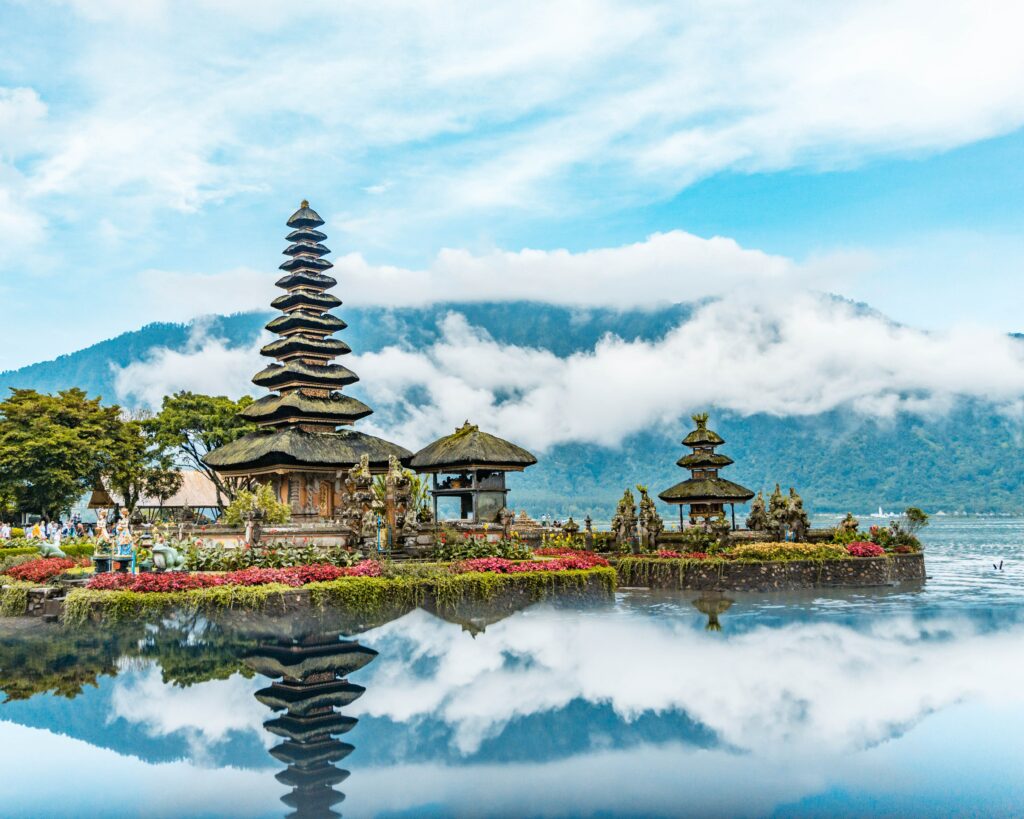
Day at Sea
Day at Sea
Overview
International Waters
Days at sea are the perfect opportunity to relax, unwind and catch up with what you’ve been meaning to do. So whether that is going to the gym, visiting the spa, whale watching, catching up on your reading or simply topping up your tan, these blue sea days are the perfect balance to busy days spent exploring shore side.

Singapore
Singapore
Overview
Arrival 08:00 / Departure 18:00 (Overnight)
Advanced, airy and elevated, Singapore is a spectacular, futuristic vision of utopian city life. A healthy population of almost six million call it home, but this is a city designed with space to breathe, and gorgeous outdoor parks, massive indoor greenhouses and beautiful recreational spaces spread between the City of Gardens' skyscrapers and soaring structures. Once a quiet fishing village, now a glistening island city-state and an international beacon of science, education and technology. Singapore is almost intimidatingly clean - and the hyper-efficient public transport system whips residents and visitors across the city's neighbourhoods in a heartbeat. Glorious fountains and audacious skyscrapers loom up - nodding to traditional feng shui beliefs - and putting on dazzling illuminated displays after dark. The lush green botanical gardens are a spectacular UNESCO World Heritage Site, covering 52 hectares and decorated with impressive colourful orchids. Or breathe in more of the freshest air by heading up to wander the canopy strung bridges of MacRitchie Reservoir Park. Head for the iconic Marina Bay - a landmark of the city crowned by three interconnected towers, which watch out over island sprinkled waters. Jaunt between Little India and the atmospheric Chinatown in minutes, where beautiful temples - like the Chinese Thian Hock Keng Temple and Hindu Sri Mariamman Temple add rich cultural intrigue. Singapore's cuisine is a mouthwatering fusion of its Indian, Chinese, Indonesian, and Malay influences, taking and enhancing the best of each. Enjoy dishes in towering restaurants, or toast the glowing skyline with the city's eponymous gin-soaked cocktail - a Singapore Sling.

Port Klang (Kuala Lumpur), Malaysia
Port Klang (Kuala Lumpur), Malaysia
Overview
Arrival 08:00 / Departure 23:00
Towered over by the world's most famous architectural siblings - the Petronas Twin Towers - Kuala Lumpur is a staggering melting pot of influences. These twin towers stand 451 metres over the city and bathe in bright lights as night's cloak descends. The glittering skyline mingles with colonial architecture and ornate temples, which decorate lush hillsides around the city. Haggle your way through humming markets, visit cultural treasures and historic sites, and dive headfirst into this city, where tradition collides head-on with modernity. The capital of Malaysia, Kuala Lumpur, is a multicultural metropolis of lively markets and tongue-tantalising street food. Globe-trot between different streets and influences in minutes, as you discover diverse architectural treasures all over the city. Evenings are spent shopping in air-conditioned malls and bustling streets filled with sprawling outdoor markets. Fill up on fragrant coconut rice of nasi lemak and sink ice-cold beers to soak up the lively atmosphere. Malaysia achieved independence in Merdeka Square in 1957, when the Union Jack was lowered, and Malaysia’s flag was hoisted high into the sky. One of Malaysia’s most visited attractions is Batu Caves, an awe-inspiring, colourful journey into a sacred void in these immense limestone cliffs. Huge statues tower over the brightly-hued steps, as you climb to the unique cave temple, in this most dramatic of locations. The golden onion dome of the National Palace, Istana Negara, is a spectacular sight, where horses clop and white-robed soldiers wait patiently. Look for the Malaysian flag fluttering before it – if it’s present, the King and Queen of Malaysia are in residence.
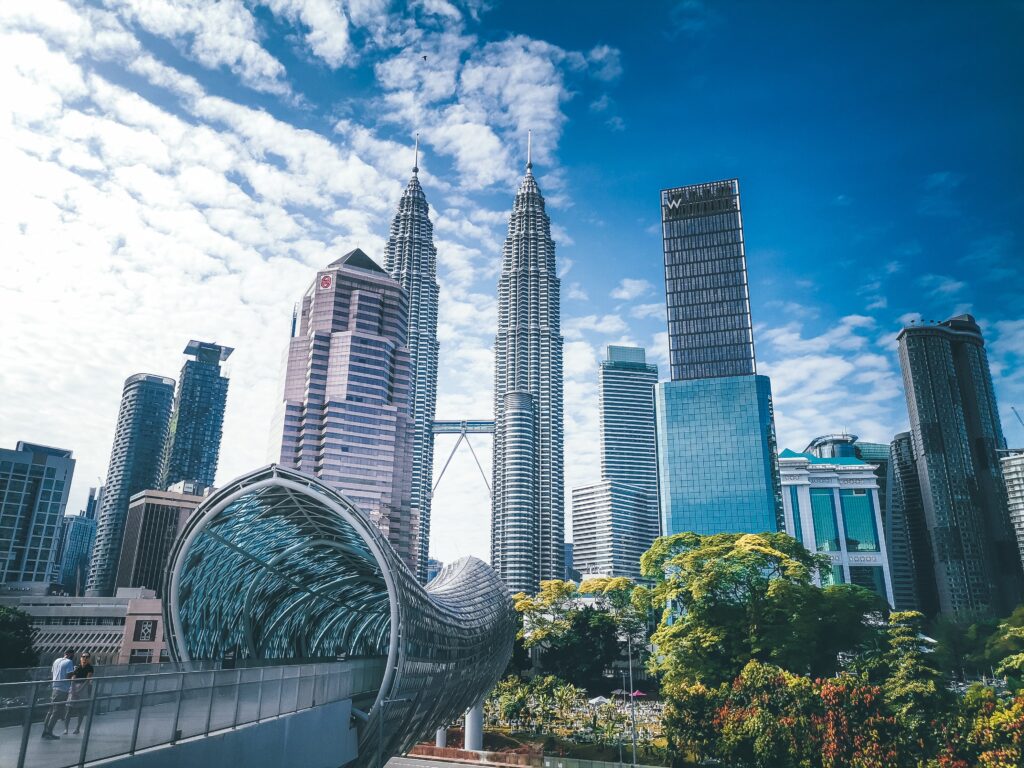
Day at Sea
Day at Sea
Overview
International Waters
Days at sea are the perfect opportunity to relax, unwind and catch up with what you’ve been meaning to do. So whether that is going to the gym, visiting the spa, whale watching, catching up on your reading or simply topping up your tan, these blue sea days are the perfect balance to busy days spent exploring shore side.

Phuket, Thailand
Phuket, Thailand
Overview
Arrival 08:00 / Departure 23:00
Thailand’s largest island promises ocean bliss and wide beaches of indulgent opulence, with some of the country’s most attractive, and dreamily dramatic scenery. Head for sumptuous spas and perfect beaches, or explore the streets of busy Phuket Town, which hum with markets, lively celebrations and an endless chorus of whirring scooters. Phang Nga Bay National Park is a nearby treasure - a remarkable landscape of towering limestone karst. The iconic rock formations are breathlessly beautiful, encased by theatrical inlets and incredible greenery-clad rock formations. Heavenly beaches - where the sun dips to paint vibrant pink and red streaks across the skies - offer intense relaxation, and you can indulge in rejuvenating treatments or take it slow to enjoy cocktails and glorious sea views while swinging in a hammock. Wander beaches where the only sounds are the rustle of folding waves, and the gentle crunch of footprints in the sand. Watersport lovers can rip across the waves, or glide through the air while taking part in the various adrenaline-pumping activities on offer. Speedboat tours give you the chance to feel the salty whip of the air in your hair, as you whizz between secluded islands, and visit authentic stilted villages, teetering out over the beautiful waters. Tuck into a delicious fusion of Thai food - think crab curry and tom yum goong’s sweet and sour prawns – to ensure this sensory journey delights your taste buds too. Lavish temples, Chinese shrines and giant Buddha statues add another layer of cultural depth.

Day at Sea
Day at Sea
Overview
International Waters
Days at sea are the perfect opportunity to relax, unwind and catch up with what you’ve been meaning to do. So whether that is going to the gym, visiting the spa, whale watching, catching up on your reading or simply topping up your tan, these blue sea days are the perfect balance to busy days spent exploring shore side.

Trincomalee, Sri Lanka
Trincomalee, Sri Lanka
Overview
Arrival 08:00 / Departure 20:00
Built on a truly majestic natural harbour - one of the world’s largest - Trincomalee is a gateway to the deep historical interests of Sri Lanka. Richly cultural and historic, Trincomalee is surrounded by treasured sites, which hark back thousands of years - and hold unprecedented cultural value. Set on the eastern coast of Sri Lanka - on the peninsula that it shares its name with - venture inland to explore some of the world's most majestic and evocative archaeological and holy sites. Or, take it easy and lay back on Trincomalee's plentiful, palm-lined beaches. Boat tours can take you out to cruise among dolphins and whales, or to the reefs of Pigeon Island. A swirl of colonial houses, temples and mosques line the multi-cultural streets of this fascinating destination. Live like a local and start the day with a steaming cup of Ceylon tea and buffalo curd for breakfast before heading out to visit extraordinary sites of ancient worship, as you explore Sri Lanka's incredible UNESCO World Heritage Sites. Head inland to the jaw-dropping Golden Temple of Dambulla, a vast temple, dominated by a gleaming gold Buddha figure. The amazing Ancient City of Polonnaruwa dates back to the 12th century and is an unearthed treasure trove of ruins - famous for its meticulously thought out urban planning. Polonnaruwa was the second capital of Sri Lanka, and you can visit the first capital at the Sacred City of Anuradhapura – a place of immense value to the Buddhist faith. The Sirigiya Rock Fortress is a jaw-dropping collaboration between man and nature, and the incredible fortress sits perched above an almighty 200-metre high slab of rock.

Day at Sea
Day at Sea
Overview
International Waters
Days at sea are the perfect opportunity to relax, unwind and catch up with what you’ve been meaning to do. So whether that is going to the gym, visiting the spa, whale watching, catching up on your reading or simply topping up your tan, these blue sea days are the perfect balance to busy days spent exploring shore side.

Galle, Sri Lanka
Galle, Sri Lanka
Overview
Arrival 07:00 / Departure 19:00
Galle is an ancient Muslim port where different political influences from Europe have merged. In fact, the Galle Fort was occupied by the Portuguese, Dutch and British until the late 19th century. Declared a UNESCO World Heritage Site in 1988, it is surrounded by the sea on three sides. The surviving Dutch-colonial architecture and narrow streets exude the historic atmosphere of this living fort. The 18th century Dutch church has a splendid wooden memorial to one of the commanders of Galle, while the Arab quarter has a distinctly Moorish touch.
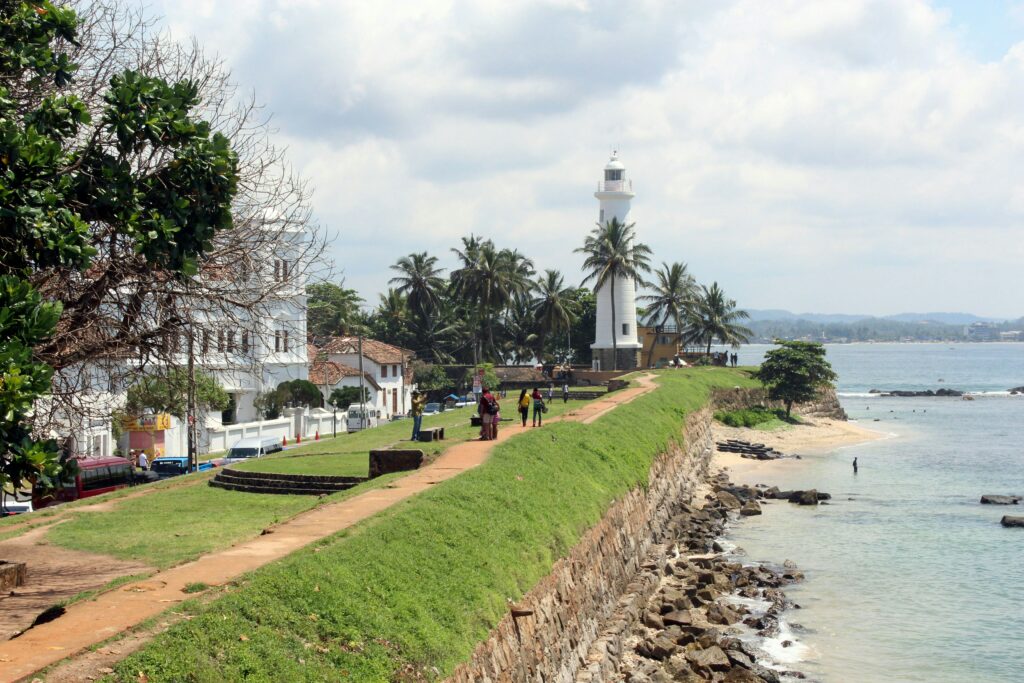
Colombo, Sri Lanka
Colombo, Sri Lanka
Overview
Arrival 07:00 / Departure 23:00
Perfumed flower garlands, colonial roots, and lavish afternoon teas welcome you to the former garden city of Colombo. Sri Lanka’s easy breezy city is certainly intoxicating, with its cinnamon dusted air, steaming cups of delicate ceylon, and sassy seaside charm. A place of full sensory immersion, explore tangled streets to sidestep frantic tuk-tuks and gaze in awe at grand colonial buildings turned heritage hotels. Cute cafes usher you inside for sweet lassi, and the walls are made for a pleasantly laxidasical pace of walking. They're perhaps most impressive on stormy days, when you can watch bruised clouds tumble and roil across the sea from this perfect vantage point. Back in the capital, stroll the ornate halls of the National Museum where gilded swords, studded masks, and rare artefacts from the ancient world and colonial times are gathered. Visit the Gangaramaya Temple, to walk among the orange-robed monks who glide between flora-strewn alters, or plunge into the chaos of Pettah - where market cries reach orchestral heights. An incredible gathering of carved Hindu gods decorate the colourful pyramid of the Captain’s Garden Kovil temple - the oldest Hindu temple in the city, which rises majestically from the surrounding railway tracks. Forever the dish of the day, crab is a must in Colombo. Sit down, tuck in your bib and use your hands to crack, scoop and suck out the soft white meat – especially delicious when smothered in lashings of garlic and fiery chilli.
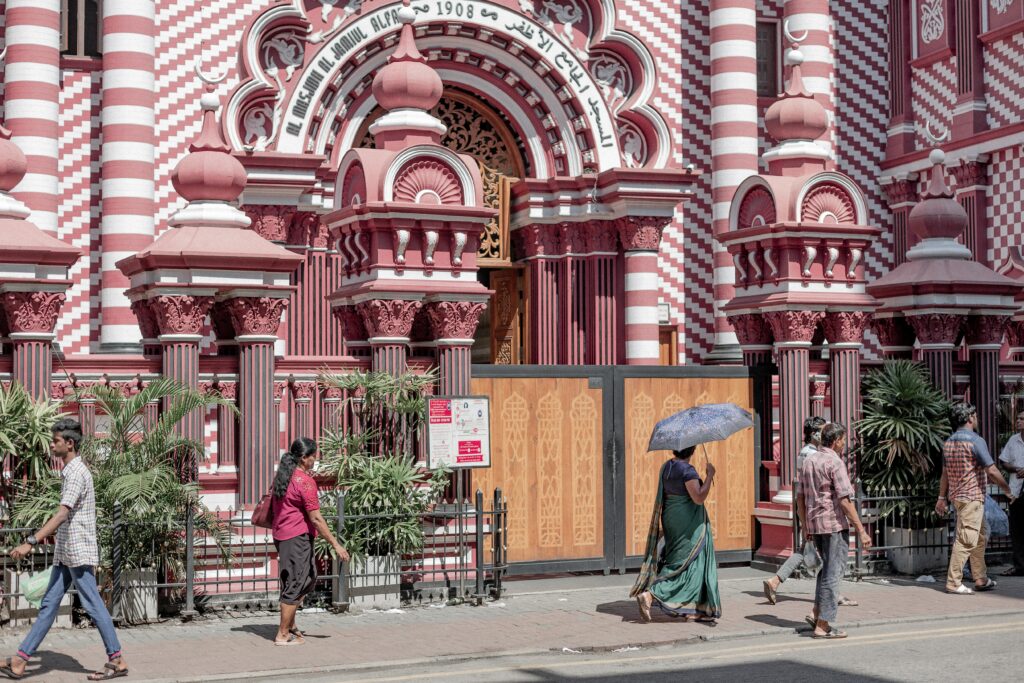
Day at Sea
Day at Sea
Overview
International Waters
Days at sea are the perfect opportunity to relax, unwind and catch up with what you’ve been meaning to do. So whether that is going to the gym, visiting the spa, whale watching, catching up on your reading or simply topping up your tan, these blue sea days are the perfect balance to busy days spent exploring shore side.

Cochin, India
Cochin, India
Overview
Arrival 07:00 / Departure 18:00 (Overnight)
A hodgepodge of cultures collide on the banks of the estuary where Cochin carves out her home. Chinese fishing nets the size of skyscrapers, boxy Dutch architecture and pretty Portuguese palaces point to the blend of influence here, while the Raj era remnants, soaring spires of old-world mosques, and near-abandoned synagogues all add to the dense, varied tapestry of inspirations and imprints. Founded by a prince in the 15th century, Cochin immediately became a favoured anchorage for sailors and traders from every far-flung corner - even taking nearby Kerala’s crown as the world's first global port city. Now, fragrant spice markets cut the hot air with cardamom and clove, while antique stores groan beneath the weight of singing copper. Hit the backstreets of Fort Kochi for a deep and dreamy Ayurvedic massage, marvel at the Krishna murals that adorn the bedchamber walls of the Mattancherry Palace, or admire India’s one of the oldest European-built Christian churches - as you duck into the cool hues of St Francis. A day can easily meander past on a backwater cruise, spreading south from Cochin, and gliding down a lacy network of creeks, lagoons, lakes and rivers. Surrounded by swaying palms and rice paddies – you’ll experience rural India in her best dress. When daylight dwindles, taste the soft spicy kick of dal roti, followed by Firni – almonds, apricots, and sweet milk crushed with pastel green pistachios for a silky light finish.
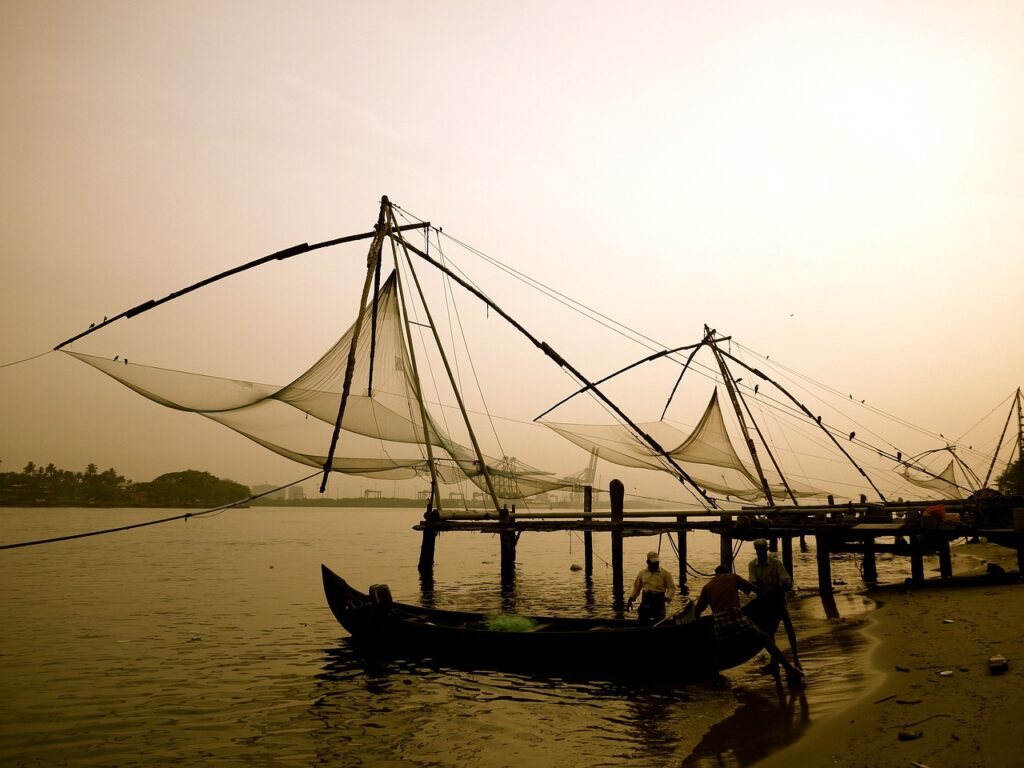
Day at Sea
Day at Sea
Overview
International Waters
Days at sea are the perfect opportunity to relax, unwind and catch up with what you’ve been meaning to do. So whether that is going to the gym, visiting the spa, whale watching, catching up on your reading or simply topping up your tan, these blue sea days are the perfect balance to busy days spent exploring shore side.

Mumbai, India
Mumbai, India
Overview
Arrival 09:00 / Departure 19:00 (Overnight)
A spicy destination of colour and chaos, the city formally known as Bombay is a deafening collision of contrasts and culture. Known as the City of Dreams, Mumbai is at once an economic centre, fashion hub and home for Bollywood’s world of glamour. This is the real India, and Mumbai is a city of unparalleled extremes and contradictions. Brutal poverty is rife in sprawling slums, while unimaginable wealth glares in the exuberances of the world’s most expensive private residence. A place of dazzling, overwhelming cultural experience – littered with UNESCO World Heritage sites - your only option is to dive in headfirst and immerse yourself in India’s extraordinary and enriching embrace. The Gateway of India was completed in 1924 and formed the symbolic entrance to British India. The last of the British troops passed through the landmark in 1948, as Mumbai entered the new era of independence. See remnants of the colonial past in the architecture and art deco buildings of the Colaba district – like the incredible High Victorian Gothic styled Chhatrapati Shivaji railway terminus building. Visit another World Heritage Site at the remarkable carved 7th-century Elephanta caves, which wait a short ferry ride from Mumbai Harbour. Dharavi is a unique experience and Asia’s largest slum is one of the most densely populated places in the world. It received global attention as the setting for the film Slumdog Millionaire. Take a tour for a remarkable insight into the conditions and community within the slums, which house a majority of the city’s population. Meet the people - kind and welcoming – as you buy products like handmade pottery and textiles, and experience an amazing city within a city. Elsewhere in Mumbai, visit the house where Gandhi lived - now transformed into a museum honouring his life and work.
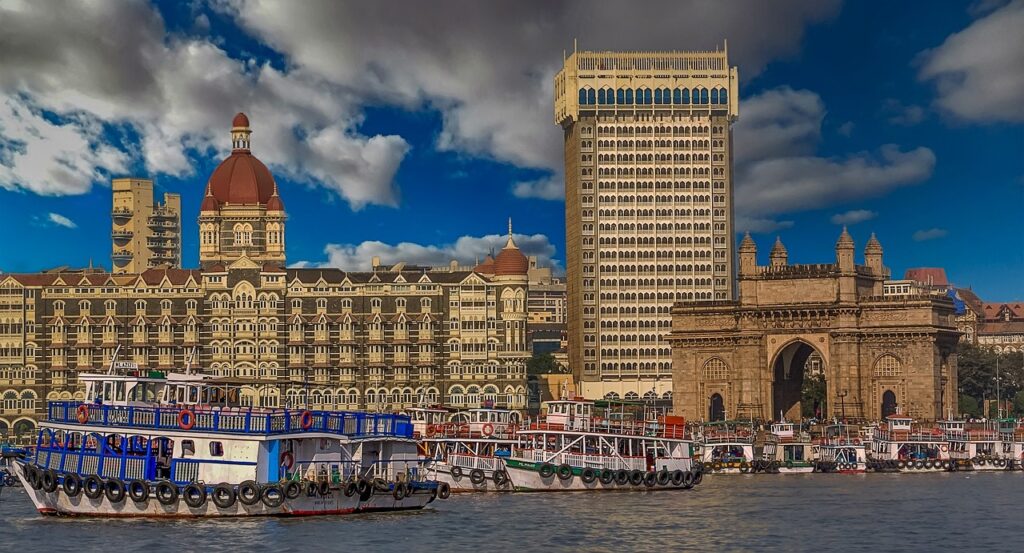
Day at Sea
Day at Sea
Overview
International Waters
Days at sea are the perfect opportunity to relax, unwind and catch up with what you’ve been meaning to do. So whether that is going to the gym, visiting the spa, whale watching, catching up on your reading or simply topping up your tan, these blue sea days are the perfect balance to busy days spent exploring shore side.

Salalah, Oman
Salalah, Oman
Overview
Arrival 08:00 / Departure 17:00
Combining thrilling history with gorgeous beaches and luxury spas, Oman’s second-biggest city is cradled by tempting ocean waters and the soaring Dhofar Mountains. A refreshing rainy season waters down the intense heat of the Gulf region, painting a rich green hue across the land and separating it from the barren desert elsewhere. Banana plantations sprawl out, and dense gatherings of coconut palms rustle together, before Salalah's cherished powdery white beaches. Sweet fragrances linger in Salalah's souqs, where exotic incenses, perfumes and spices are traded. Set in Dhofar province, the desert staging is smudged with greenery and life during the downpours and misty rains of Khareef season. The clouds tame the heat and fuel stunning waterfall torrents, with a local festival celebrating the arrival of this monsoon each year. Even in drier months, the earlier deluges ensure that there is an added vibrancy to the ravines and wadis nearby. Enjoy the sunshine and settle into the sandy embrace of luxury beaches, before indulging in stress-relieving massages. Head to popular spots like Al Mughsail beach, where explosive blowholes boom with frothing spray, as the waters collide with coastal rock formations. Travel back in time at the UNESCO World Heritage Site listed ancient city of Dhufa - which has been reclaimed from the rusty desert soil at Al Baleed Archeological Park. An ancient centre of frankincense trade, the on-site museum explains the history of this precious ingredient, extracted from the region's fragrant Boswellia trees and exported far and wide.

Day at Sea
Day at Sea
Overview
International Waters
Days at sea are the perfect opportunity to relax, unwind and catch up with what you’ve been meaning to do. So whether that is going to the gym, visiting the spa, whale watching, catching up on your reading or simply topping up your tan, these blue sea days are the perfect balance to busy days spent exploring shore side.

Safaga (Luxor), Egypt
Safaga (Luxor), Egypt
Overview
Arrival 07:00 / Departure 17:00 (Overnight)
Unravel the mysteries, and marvel at the artistry and scale, of some of Ancient Egypt's most important and impressive monuments, which rise from the fertile plains and palm groves of the River Nile. Safaga’s port sits on the Red Sea's dazzling coastline, where gorgeous beaches and super waters for diving and snorkelling await. Unwind here, amid the colourful fish life, or lie back to soak in ever-reliable sunshine. Most will choose to head inland to the banks of one of the world’s longest and most storied rivers - where the immense treasures of Ancient Egypt loom in the desert's haze. Modern Luxor rests beside the Nile, and is set amid an unparalleled archaeological site of swirling legend and ancient beauty. This vast, open-air museum sprawls out below the burning sun, and you'll discover preserved ancient tombs, momentous statues like the Colossi of Memnon, and vast columned temples with rows of statues, such as the Temple of Karnak. Soak in the surroundings on boats, which meander up and down the river, or head out to tick off as many of the remarkable ruins as you can. Cultural treasures like the World Heritage Site listed Valley of the Kings – carved into the copper rock of the desert – provided elaborate resting places for Ancient Egypt's revered Pharaohs. Built between the 16th and 11th centuries BC, no fewer than 63 temples have been discovered here so far. Head into incredibly preserved tombs, decorated with majestic and mystical symbols and colourful artworks. See famous sites like the cursed tomb of King Tutankhamun, and the imposing rise of Queen Hatshepsut's temple, amid the countless highlights and wonders.
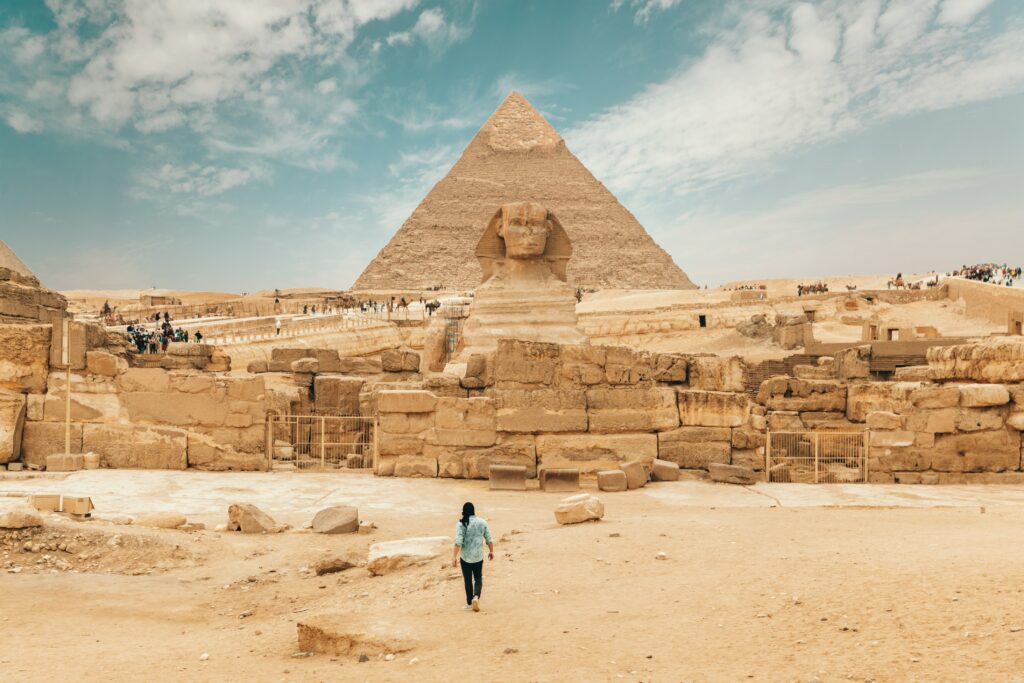
Aqaba (Petra), Jordan
Aqaba (Petra), Jordan
Overview
Arrival 07:00 / Departure 23:00
Improbably carved into the rusty-red rock of the Jordanian desert, the ancient city of Petra has been mesmerising visitors since being rediscovered by Westerners in 1812. Siq Canyon provides a suitably grandiose welcome, cutting a deep track through layers of fiery sandstone, and building up the suspense, before you first set eyes on the Lost City’s majesty. An early start is best to explore this UNESCO World Heritage Site, giving you chance to beat the crowds and avoid the brunt of the heat. The Treasury is perhaps Petra’s best-known structure, having featured in Indiana Jones and the Last Crusade as the mystical hiding place of the Holy Grail. Imprinted deep into the sheer sandstone, it’s a dramatic, spectacular achievement of human endeavour. Look closely, and you’ll see the indentations of bullet holes scarring the urn that sits atop it – fired by Bedouins fuelled by rumours of ancient treasure within. Petra developed as the capital of the Nabataean Kingdom, and the sophistication of the Rose Kingdom’s rock-hewn buildings is matched only by the elaborate and advanced water collection and transportation system that quenched its thirst and provided the means to thrive, despite its remote location and the intense burn of the sun. Look out for the delicate water channels that lace the city as you explore. High above the city - up a daunting 800-step climb - stands the Monastery. It’s lesser known, but larger and - whisper it quietly - perhaps even more impressive than the Treasury. The High Place of Sacrifice is an even tougher hike - with only occasional electric-blue lizards scattering from your footsteps as you rise - but the views of the remarkable city, embossed into the mighty sandstone cliffs below, will last a lifetime.
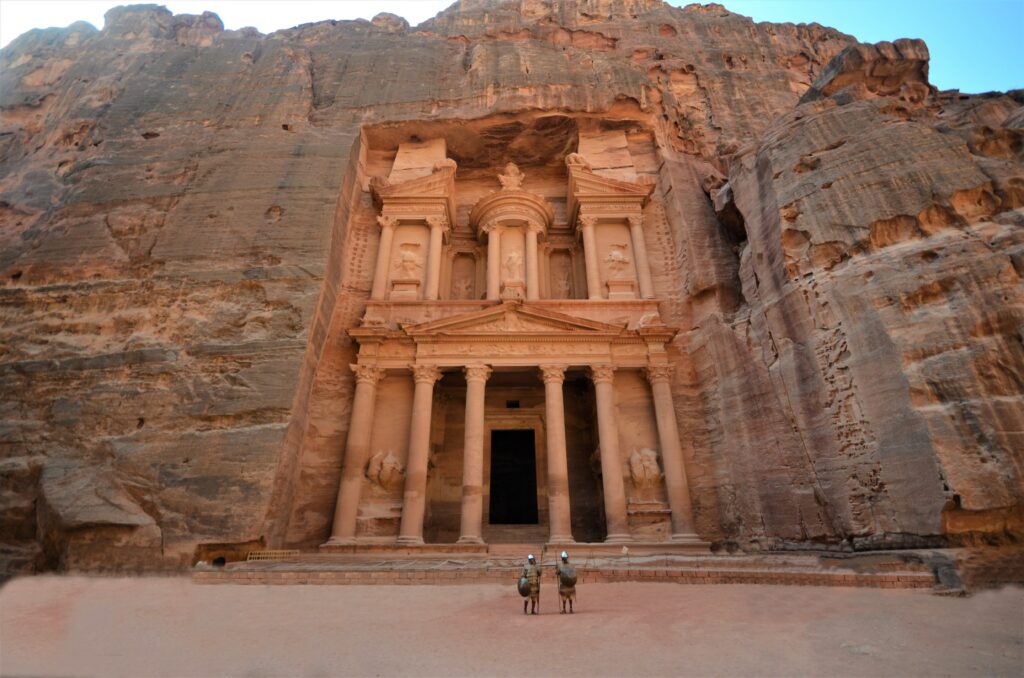
Day at Sea
Day at Sea
Overview
International Waters
Days at sea are the perfect opportunity to relax, unwind and catch up with what you’ve been meaning to do. So whether that is going to the gym, visiting the spa, whale watching, catching up on your reading or simply topping up your tan, these blue sea days are the perfect balance to busy days spent exploring shore side.

Suez Canal Transit, Egypt
Suez Canal Transit, Egypt
Overview
04:00 - 18:00
The Suez Canal, gouged through Africa, is one of the world’s engineering marvels - linking two seas, and drastically shortening boat voyages around this huge continent. Few manmade waterways are so storied and iconic, and sailing the length of it is a bucket list item for many explorers. The construction of the canal started in 1859, and took ten years to complete, with the canal officially opening in November 1869. More than a million people worked on the project, often in unimaginable conditions. An engineering breakthrough, the canal connected the Mediterranean to the Red Sea - drastically improving global trade's efficiency. A hugely strategic and precious bottleneck, it has inevitably led to conflicts - and been vulnerable to scuttling to block its usage. The Six-Day War closed the canal, leaving 15 unfortunate ships trapped within for eight years. An amazing story, the crew members of the Yellow Fleet - named as their ships slowly gathered desert sand - adapted and created a community within the confines of Bitter Lake. Sit back and admire the desert views, as you transit the 101 Mile expanse, occasionally interrupted by little villages, with domed mosques and minarets towering into the sky. Look out for the tiny fishing boats that share the canal’s waterway, dwarfed by giant container ships - the plucky fishermen courageously refuse to yield to the massive vessels they sail beside. There is no need for locks in the canal, as the two seas sit at the same level, and passing lanes ensure that ships can travel the engineering marvel in both directions.

Ashdod (Jerusalem), Israel
Ashdod (Jerusalem), Israel
Overview
Arrival 07:00 / Departure 23:00
From Ashdod’s port, it’s a just a short ride to Jerusalem’s land of incredible religious significance and cultural wonder. A city like no other, Jerusalem is a melting pot of traditions, and a place of staggering complexity and immeasurably deep, impactful history. It’s almost impossible to fully digest Jerusalem’s importance in the scriptures of the world’s largest religions Judaism, Christianity, and Islam, and this collision of faiths helps to make it one of the world’s most fascinating locations. The Old City is the focal point for much of the religious reverence, with aged buildings from the world’s major faiths jostling for space, and melodic calls to prayer echoing down tight stone streets. Stroll the walkways to travel between deeply contrasting quarters, where you can sample roughly ripped pita bread, dipped into fresh, flavourful hummus. A place of unbridled passion and importance - but also extraordinary beauty - it’s easy to get swept away in the raw emotion that Jerusalem generates. Visit the Church of the Holy Sepulchre, which archaeologists believe stands on the site where Jesus was crucified. Inside, emotional worshipers kneel before the stone where his body was wrapped in cloth in preparation for burial. The Wailing Wall is another place where passions run high, as worshipers place their folded messages into the wall’s cracks. Temple Mount’s golden dome glints in the sun nearby, signifying another point of pilgrimage for Jews - and for Muslims, who believe it is the place where Muhammad ascended to heaven.
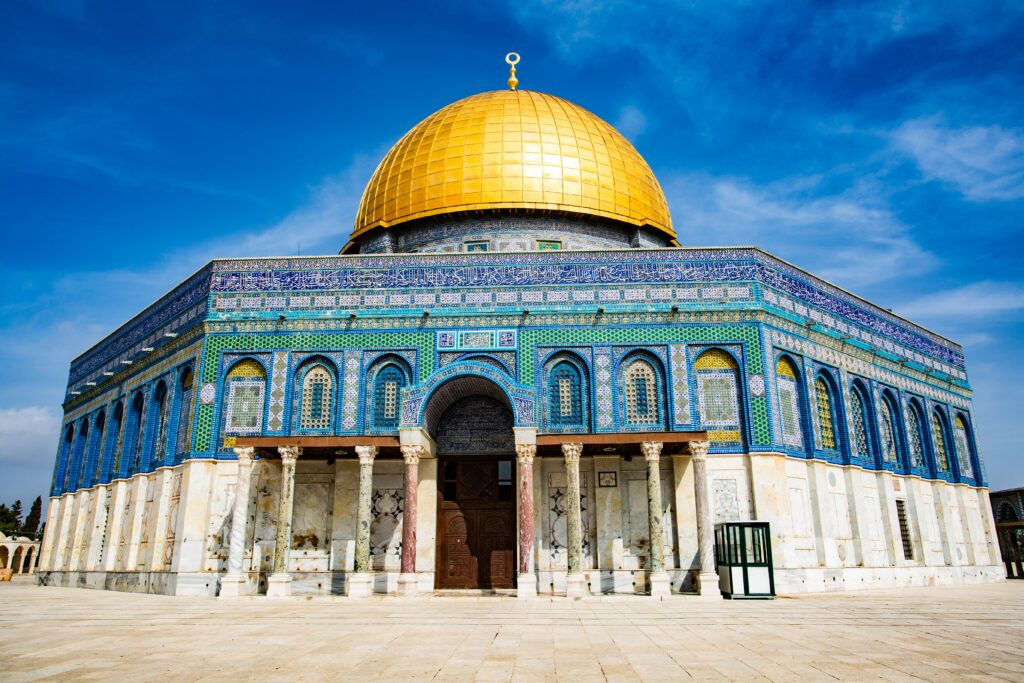
Haifa (Nazareth), Israel
Haifa (Nazareth), Israel
Overview
Arrival 08:00 / Departure 23:00
At less than 45 kilometres from Nazareth, Haifa is often neglected when it comes to travel experiences. And understandably so, as Nazareth is definitely the superstar of the region. The pilgrimage site is certainly a must for all believers of all denominations, and the chance of seeing where Jesus spent his childhood is too good an opportunity to pass up for some. If, however you go expecting to find a bucolic utopia then think again. Nazareth today is bustling modern hub of a mega metropolis, which has grown up around the crumbling walls of the Old City. Nazareth Old City is stunning, and the historic sites where Jesus is believed to have lived and preached prior to his death are certainly bucket list. These include the Basilica of the Annunciation, where the Angel Gabriel visited Mary to inform her of her virgin birth, the Church of Joseph, the ancient site of Joseph’s carpentry shop and Cana (located on the shores of the Sea of Galilee), where Jesus performed his first miracle of turning water into wine. But that is not to say that Haifa itself is not worth a visit. The city – the third largest in Israel after Tel Aviv and Jerusalem – is a mosaic of cultures and faiths, with Jews, Christians, Muslims and Baháʼís all living peacefully side by side. The Baháʼí Gardens, part of the UNESCO World Heritage Site, are without a doubt the city’s main attraction. Set on the flanks of Mont Carmel and sloping into the Mediterranean Sea, both the gardens and the city offer stunning views.
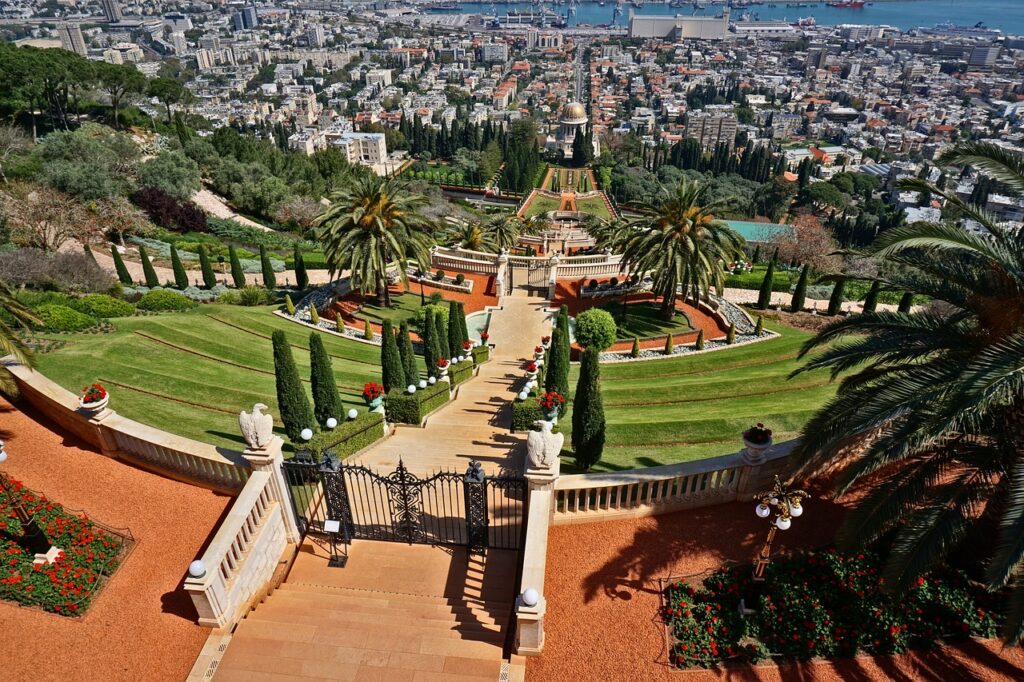
Day at Sea
Day at Sea
Overview
International Waters
Days at sea are the perfect opportunity to relax, unwind and catch up with what you’ve been meaning to do. So whether that is going to the gym, visiting the spa, whale watching, catching up on your reading or simply topping up your tan, these blue sea days are the perfect balance to busy days spent exploring shore side.

Antalya, Turkey
Antalya, Turkey
Overview
Arrival 08:00 / Departure 18:00 (Overnight)
Antalya instantly shot to fame when Turkey opened to wider tourism in the early nineties. And with its enviable balance of picture perfect beaches, glorious climate and superb architecture it is no surprise. Since then it has carved a niche for itself as an all-purpose resort, offering much to see and do for couples young and old and families alike. Arrival into Antalya is a breathtaking sight. The turquoise waters stretch long and far, fringed by golden sands and a classically beautiful coastline. The city has changed hands several times, with many archaeological remains proving testament to its past. One such must see is the unmissable Hadrian’s Gate. Built in 130AD to commemorate the visit of Emperor Hadrian to the city, it is the perfect starting point to begin a pleasant stroll through the labyrinthine streets of Kaleiçi (literally, Castle Town), otherwise known as Antalya Old Town. Narrow, cobbled lanes offer a chance to get lost in a bit of Ottoman history, while enjoying a thick, sweet (and very strong) Turkish coffee. For those wishing to delve a little deeper into the city’s fascinating past, the Antalya Museum offers history buffs a comprehensive journey from the city’s initial foundations in the Stone Age right through to the Byzantine Empire. A short 30-minute taxi ride will take you to the stunning Duden Waterfalls, a site (and sight) of exquisite natural beauty. There are in fact two parts of the falls, both of which offer a pleasant moment to revel in the power of Mather Nature.
Rhodes, Greece
Rhodes, Greece
Overview
Arrival 08:00 / Departure 18:00
With an endless sun-soaked season, earthy history and vibrant culture, the island of Rhodes has it all. At the crossroads between continents, and sandwiched between Crete and Turkey’s coastline, Rhodes has swayed between many mighty civilisations throughout its tumultuous history. Part of the Dodecanese Islands, which are sprinkled across the blissfully blue Aegean Sea, dive into this island of dazzling beaches, historic medieval towns, and whitewash villages. Crusted with turrets and walls, alluding to its strategic significance over the years. Incredible history has been left behind, and the cobbled streets of the UNESCO World Heritage site listed Old Town are some of Europe’s best. Wander back through time, with occasional minarets from Ottoman-era mosques rising from the tangle of Medieval history, and the smells of cinnamon, cumin and pepper lingering above stone-paved streets. Discover inviting outdoor restaurants, which spill across flower-filled courtyards, and enjoy fresh Greek cuisine with an eastern influence. The preserved columns of Lindos's spectacular Ancient Greek Acropolis watch out over electric blue water, while the Gothic Medieval stronghold of the 14th-century Palace of the Grand Masters of the Knights of Rhodes, adds more fascinating history to explore. Fragrant, pine tree coated hills, and gorgeous beaches of eye-watering blue water, offer your choice of unbridled relaxation or thrilling action, and you can raise the pulse with water sports, or shelter in coves with shocks of turquoise water and monolithic rock formations.
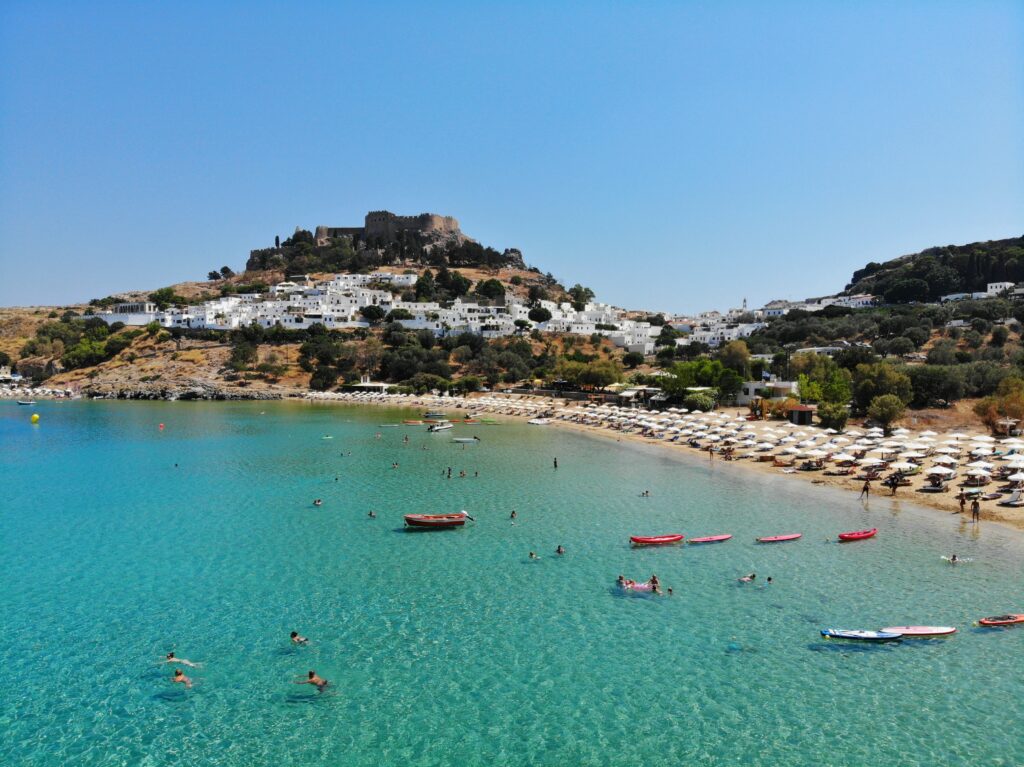
Aghios Nikolaos, Crete
Aghios Nikolaos, Crete
Overview
Arrival 08:00 / Departure 17:00
Set on the east of the Greek island Crete, Aghios Nikolaos is a place of legend and luxury. Pastel-coloured houses jostle attractively around the pretty harbour and inky lake, while busy restaurants and cafes spill out onto its lively waterfront. Life here orbits around Lake Voulismeni, and the legendary lake is said to be bottomless, and to have been a bathing spot for Greek goddesses Athena and Artemis. Enjoy heavenly views of the water through frames of pretty, violet flowers, or climb the stone steps for a sweeping panorama of the town, lake and seas beyond. With abundant waterfront, hours meander past effortlessly in the town’s humming cafes, as characters come and go, and sunlight flicks off the sparkling waves. Aghios Nikolaos is surrounded by wide, scenic beaches, and you can choose between Voulisma - where crystal-clear water lolls against fine sand, or Almyros – where a refreshing ribbon of cooling freshwater snakes out into warm turquoise seawater. Away from the beaches, look for the brightly-frescoed Panagias Keras Church - one of the region’s oldest Byzantine churches - which dates back to the 13th century. Explore local farms to taste fresh oil, crushed from plump olives, ripened by the generous Cretan sun.
Athens (Piraeus), Greece
Athens (Piraeus), Greece
Overview
Arrival 09:00 / Departure 23:00
A city of legend, civilisation and enduring culture, Athens is a majestic and magical urban sprawl. Extraordinary elegance and grace combine with grit and graft in Greece's capital, where highways encase ruins from antiquity, and gleaming museums and galleries stand beside concrete sprayed with edgy street art. These contrasts enhance and elevate the wonders of this 2,500-year-old city, however, which can count notable contributions to philosophy, drama and democracy, among its global legacy. Piraeus' giant port and naval base welcome you to the edge of the Athens' urban area. From there it's a simple jaunt to the centre. The majestic ancient citadel of the Acropolis dominates an elevated platform and is a constant presence as you explore the city. The wonderful remains of the columned temple of the Parthenon - which date back to the 5th century BC - stand here, representing the pinnacle of classical architecture. The nearby Acropolis Museum adds context to your visit and frames the broad views from its giant glass windows. Or rise up Mount Lycabettus, to be rewarded with perhaps Athens' best panorama of the Acropolis sitting high over the city on its grand stage. See the marble horseshoe of the Old Olympic Stadium, where the first modern Olympics were held in 1896, for more of the city's enduring legacy. Elsewhere, golden beaches and temples stretch out along the coastline, should you wish to explore a little further afield. Coffee is an art form to the Greeks, and it's an unwritten rule that coffee time must never be rushed. So prepare to settle down for a couple of hours and lose yourself in a good chat. Feeling hungry - try traditional souvlaki made with sauces handed from generation to generation.

Nafplion, Greece
Nafplion, Greece
Overview
Arrival 08:00 / Departure 19:00
Greece’s first capital remains the escape of choice for Athenians, who weekend here to indulge in the town's gorgeous seaside setting. One of the country's most romantic towns, the warm colour palette and tempting, island-sprinkled waters, pull on plenty of heartstrings. With perfect beaches, crystal clear waters for swimming, and evocative fortress-capped mountains, Nafplion is a sun-soaked Greek beauty. A gorgeous blend of Greek, Byzantine, Venetian and Ottoman influences, stroll the seafront promenade and soak up the ambience in tavernas and bars. Head into the warren of an old town, which is full of narrow streets, neoclassical architecture and pink-flowered trees drooping over walls. Located on the hill that towers over Nafplion, Palamidi Fortress is a Venetian castle built in 1714, and its steep walls flow dramatically down the slope. If you're feeling brave, a slog of 857 steps will take you to the top to see beautiful views across Nafplion and the Argolic Gulf. Acronafplia fortress is Nafplion's oldest castle, and its walls enclosed the entire town until the 13th century. Just offshore, the Venetian Bourtzi fortress rises on a tiny islet, a short boat ride away across the glistening waters. Venetians built this harbour fortress to protect the town before it later housed the official executioner. Today its hardy walls shake to music, during its summer festival, and the castle enjoys a gorgeous view back over the waves to the town's humming waterfront. Ancient cities like Corinth lie close by, recovered and unearthed after being wiped from history by immense earthquakes.
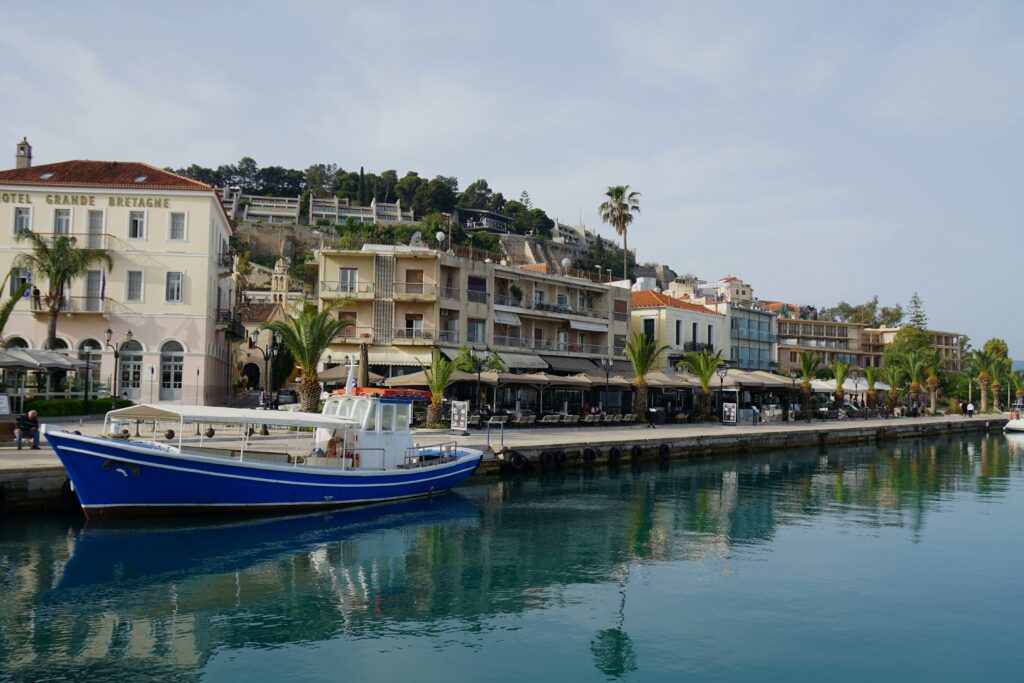
Day at Sea
Day at Sea
Overview
International Waters
Days at sea are the perfect opportunity to relax, unwind and catch up with what you’ve been meaning to do. So whether that is going to the gym, visiting the spa, whale watching, catching up on your reading or simply topping up your tan, these blue sea days are the perfect balance to busy days spent exploring shore side.

Sarande, Albania
Sarande, Albania
Overview
Arrival 08:00 / Departure 17:00
Overlooking the turquoise blue Ionian Sea, Albania’s most southerly harbour is a short 20-minute boat ride from Corfu, and bathes in the glow of more than 300 sunny days each year. Revel in Albania’s best beach life, or explore historic ancient cities and fortresses embedded with immense archaeological interest. Clear turquoise waters lap the city's beaches, and there's always something to see along the lively Boulevard Hasan Tahsini - which traces the seafront and is stacked with bars, restaurants and shops. The hardy, 16th-century Lekuresi Castle has been battered by weather and war over the years but it offers a fantastic lookout point to survey Sarande's expanse, Corfu's island, and the turquoise sea beyond. From here, you can head to the Blue Eye Spring, a rejuvenating natural landmark where a groundswell of the purest water gushes up 50 metres to surface amid the forest. Bathe in the immaculate waters, which are intensely refreshing on sunny days. The majestic ruins of Butrint's ancient city stand nearby, unearthed from the leafy site, after the city was abandoned in medieval times. Albania's first UNESCO World Heritage Site, Butrint was an ancient Greek and Roman stronghold - and you can walk back in time along stone-paved streets to discover the immense history here. Roam between the compact Roman theatre and the impressive arched-windows of the basilica, before admiring the stunning floor mosaics that have been left behind.
Dubrovnik, Croatia
Dubrovnik, Croatia
Overview
Arrival 08:00 / Departure 20:00
Croatia’s crowning glory rears up vertically from the tranquil waters of the Adriatic, and Dubrovnik’s daunting fortresses town is a truly imposing sight to behold. Encircled by chunky stone walls so thick and dramatic they could have been purpose-built as a film set, this city’s unmatched old town is the setting for countless films and shows - from Star Wars to Robin Hood, Game of Thrones and every production in-between seeking a truly authentic medieval flavour. This fantasy fortress’s walls - which are no less than 12-metres thick at places - are certainly not just for show, however. They kept Dubrovnik safe when it was a maritime republic and they were besieged as recently as 1991, when Serbian and Montenegrin forces attacked, as Yugoslavia broke apart. Fully restored now, the stone streets of the city take you through a beautiful mosaic of architectural splendour, baroque churches and splashing fountains. Tapering alleys rocket up from the central boulevard of Stradun, offering spectacular views down, but you’ll need to walk the city walls to appreciate the fortress city’s full scale. Banking up sharply to the rear, you can gaze across an ocean of terracotta roofs and church spires, clamouring together before the sparkling Adriatic. Visit the neighbouring fort of Lovrijenac, for another perspective, or swing up to Srd fortress’s glorious panorama on a cable car. Dubrovnik’s streets are crammed with eateries and candlelit tables, where couples splash wine into glasses and enjoy gnocchi mixed with creamy truffle sauces. Nearby beaches like Banje are also close by, and hidden bays reward the intrepid who venture out beyond the old town. Take sunset drinks to sit back and watch as flotillas of sea kayaks roll by, or sail on the pristine waters to explore island gems like Lokrum - where peacocks are the only permanent residents.
Split, Croatia
Split, Croatia
Overview
Arrival 07:00 / Departure 23:00
Bathing in the Dalmatian Coast’s generous sunshine, and overlooking sparkling, island-studded waters, Split is a city of romantic beauty, built around an extraordinary - still beating - historical heart. The setting may be spectacular, but it’s the Diocletian’s Palace - a Roman remain of incredible scale and detail that is truly bewitching. While immensely historic, Split hasn’t been afraid to move with the times, and the stone walls encasing the streets are alive with buzzy bars and quiet nooks, where bottles of red wine are uncorked and delicious meals devoured. With a natural backdrop of dramatic limestone mountains, and Croatia’s trademark scenic wonders all around, Split is a true heavyweight of the Adriatic. To enter Split’s Diocletian’s Palace is to step into a beautiful time warp. Head first to the Cathedral of Saint Domnius, where a hollow bell tower rockets up, puncturing the sky. The palace’s cellars can shelter you from a little of the heat and give space for everything from wine festivals to souvenir stalls. The perfume of lavender hangs heavy wherever you walk in the old town, where tucked shops offer artisan chocolates, dried figs and freshly-ground coffees. The expansive seafront promenade is all palm trees, buzzing bars and eateries, and further out you’ll find the peace of Marion Hill - where you can climb to some of the best views in town. Or, take the far less exerting wander to Sustipan cemetery’s breathtaking panorama of sea, city and distant islands. Trips to island paradises like Hvar and Brac are tempting, as are longer excursions to sites like Krka National Park’s Waterfalls - where wide terraces of frothing water thunder into cooling, swimmable splash pools below. Nearby Trogir is another UNESCO World Heritage Site, offering a cosier, no less charming old town and historic port.
Hvar, Croatia
Hvar, Croatia
Overview
Arrival 08:00 / Departure 20:00
One of the most popular of the island escapes sprinkled across the turquoise Adriatic, Hvar is a glorious idyll of hidden coves, electric blue waters and quietly contented port towns. In recent years, it’s gathered something of a reputation as a party island - mainly earned from Hvar Town’s nocturnal exuberances, and the transient day-tripping yachts that drop by. Soak up the energy, exuberance and fine dining, or sidestep the hedonism to explore a richly refined, rural and historic island – utterly spoiled with sunshine, and hidden beaches, which dazzle with colourful intensity. Bike rides along long sweeping coastal paths, boat journeys from pretty harbours, walks through fields of purple lavender - it’s all waiting for you on heavenly Hvar. Relish the sunshine and explore deserted, idyllic inlets, before sharing strong espressos in quiet harbour towns, surrounded by welcoming, sun-wrinkled locals. There’s also rich Medieval history – the sleepy town of Stari Grad is said to be Croatia’s oldest, dating back to 384 BC. Elsewhere, Jelsa is a postcard perfect place – settle in for a bite to eat, with nothing but the sound of harbour waters lapping and sandpaper scraping boats hulls for company. You can walk to look out over glorious views across to Brac, sometimes watching on as thunderstorms rage and flash, an eternity away over the mainland’s crumpled mountains. You’re also just a short ferry ride from the incredible Golden Horn - an evocative spike of brilliant sand which juts out evocatively into the cobalt-blue sea.
Kotor, Montenegro
Kotor, Montenegro
Overview
Arrival 08:00 / Departure 20:00
Embedded into the slopes of the steep Lovćen mountain, and overlooking the deep blue Adriatic, the fortified town of Kotor boasts a spectacular, imposing staging that few can match. Squeezing in through the tight Bay of Kotor is a daunting and impressive approach in itself, as you arrive via one of Europe’s most stunning waterways. A pearl of Montenegro and the Adriatic, Kotor's warren-like streets drip with history and authenticity. Under Venetian influence for four centuries, the city's UNESCO World Heritage Site old town invites you to wander amid atmospheric stone-clad streets, overlooked by a sea of terracotta roofs and the double towers of the cathedral. Protected by thick stone walls - and the mountains behind - Kotor draws comparisons with another fortified Adriatic wonder in Dubrovnik. Many favour Kotor for its compact layout, smaller crowds, and authenticity, however - having been spared from shelling during Yugoslavia's breakup. The tightknit streets here are patrolled by a slinking population of feline residents, who were adopted as the town’s mascots, after being left behind by transient trader ships. Learn of the city's extensive heritage on the waves, in the dedicated maritime museum that is contained within Grgurina Palace. Pick your way through tight alleys of workshops and studios, walking below fresh laundry strung from windows, before settling into shiny, paved piazzas for an afternoon coffee or seafood meal. If you’re up for an aerobic challenge, tackle the 1,350 steps up the steep walls to St John's fortress. The views over the gorgeous bay make the arduous slog worth it, as you rise past the city's eye-catching 15th-century church bell tower.
Bari, Italy
Bari, Italy
Overview
Arrival 08:00 / Departure 23:30
Welcoming ferries from across the Adriatic and serving as the gateway to Puglia – Bari is a historic port town that invites you on a journey through everyday life in Italy’s unpretentious south. Explore further afield to immerse yourself in Puglia’s beauty and cultural wonders - or simply soak up the atmosphere roaming the crooked streets of Bari’s old town - Bari Vecchia - where matriarchs roll out sheets of pasta in open doorways, footballs rattle along dusty streets, and sun-wrinkled old men lay out hands of cards. The photogenic old town’s streets are crowned by the chalky white Cattedrale di San Sabino, where vaulted archways, pretty mosaics and a large rose window await. Wander along the ruler-straight Lungomare Promenade to breathe in fresh salty air and look up at the slowly twirling ferris wheel - take a ride for some of the best views out over Bari’s waterfront. Feeling hungry? Enjoy some local cucina povera - cooking of the poor – deeply traditional food that is simple and rich in elemental flavours. Warm focaccia bread, pasted with fruity local olive oil, and ear-shaped orecchiette pasta tangled with sun-gorged cherry tomatoes and creamy ricotta cheese, is all on the menu. Puglia’s whitewashed ancient villages, stunning beaches and laid-back, down-to-earth approach to life means you’ll most likely want to explore further than just Bari. Highlights include Lecce’s grand baroque architecture, and the conical-roofs of the fairy-tale trulli houses of Alberobello. Powdery white sand beaches await at Salento - punctuated by arching rock formations. The incredible cave dwellings of Matera – 2019’s European Capital of Culture - are also easily within your grasp, as is Polignano a Mare’s spectacularly scenic narrow wedge of urban beach. Surrounded on three sides by steep terraces of rock, and full of snorkelers admiring the sights below the crystal-clear water, it’s a truly stunning place to bathe in the glow of the Italian sun.
Day at Sea
Day at Sea
Overview
International Waters
Days at sea are the perfect opportunity to relax, unwind and catch up with what you’ve been meaning to do. So whether that is going to the gym, visiting the spa, whale watching, catching up on your reading or simply topping up your tan, these blue sea days are the perfect balance to busy days spent exploring shore side.

Siracusa (Sicily), Italy
Siracusa (Sicily), Italy
Overview
Arrival 08:00 / Departure 23:00
Honey-coloured Siracusa is a staggering UNESCO World Heritage Site, and an extraordinary Sicilian city of immense ancient history. The modern population is a fraction of what it was at the city’s heyday around 400 BC, when Athens’ might was successfully challenged and faced down, reinforcing the city’s incredible power and status. Siracusa’s historical nucleus waits to be discovered on the compact islet of Ortygia. The city was founded here, but grew over time, spreading across to the mainland. A small channel separates the two, which is now spanned by twin bridges. Wander the atmospheric streets of this time warp, to reach the shining elegance of Piazza Duomo. The Baroque cathedral rises like a giant sandcastle, and you can settle opposite to cradle a glass of wine and enjoy the view over the immaculate square - people watching before the glorious baroque façade. Dig deep into its history at the mainland's archaeological park. Here you can wander between the remains of a Greek theatre, constructed in the 5th century BC, and now used as a grandiose, atmospheric venue for events and performances. You’ll also encounter a Roman Amphitheatre - where gladiators battled brutally, and the spectacular ear-shaped cave, which is famed for its extraordinary, secret-revealing acoustics. It was given its name - the Ear of Dionysius - by Caravaggio. Visit the legendary Fonte Arethusa, or lose yourself in the Ortygia Market – you’ll find everything here, from fresh fish, to spices and local bottles of wines. Look out for a flavour-filled jar of real Sicilian u strattu - an intense tomato paste that is the secret ingredient to many Sicilian recipes. The local ingredients are imbued with flavour by this volcanic land’s fertile soils and the firepower of Europe’s most active volcano Mount Etna, waits just to the north.
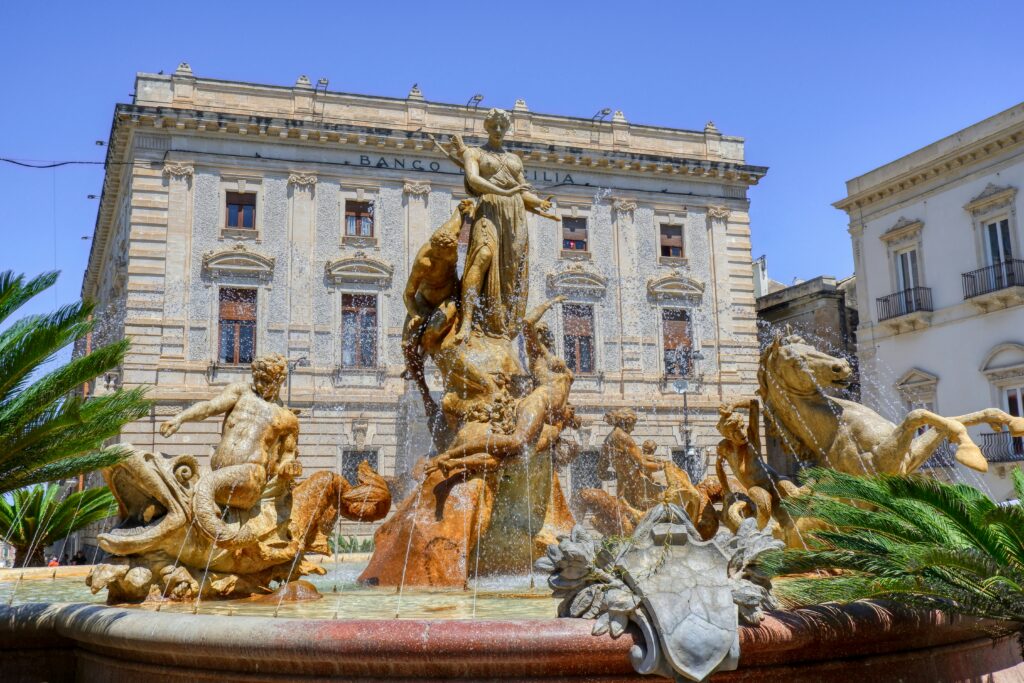
Valletta, Malta
Valletta, Malta
Overview
Arrival 08:00 / Departure 17:00
Perched high on the imposing Sciberras Peninsula, Valletta immediately presents its massive, protective walls and vertical bastions to visitors arriving by sea. Rising to 47 metres in places, the fortifications protect lavish palaces, grand domes and illustrious gardens. Built by the Knights of St John on the narrow peninsular, Valletta is a compact, richly historical treasure trove of Baroque wonders. Ascend to reach the restful, flower-filled Upper Barrakka Gardens, where cannons fire and boom in salute at noon each day, sending echoing cracks of noise out across the waves below. Recognised as 2018’s European Capital of Culture, Valletta is a fascinating and dense haven of history and intrigue. A busy, bustling capital, the breathtaking St John’s Cathedral - commissioned in 1572 - is almost concealed among its narrow streets. The relatively modest exterior is counterpointed by a staggeringly opulent, gold-leaf bathed interior, containing a Caravaggio masterpiece - the shadowy vision of the Beheading of St John. Cinematic and magnificent, Valletta has served as a filming location for Game of Thrones - but real epic history abounds on this rocky isle too. From the prehistoric and megalithic sites of the Hypogeum of Paola and Tarxien, to the fascinating War Museum at Fort St Elmo. Mdina also waits nearby, and the former medieval capital is a striking contrast to the island’s main city. Cars are barred from its streets, and it offers endlessly atmospheric old-time wanders. With a strategic positioning in the Mediterranean, Malta is a jewel that many have wrestled for over the centuries. Independence from Britain was finally achieved in 1964, but the close allegiance remains evident, with English recognised as an official language, cars driving on the left, and red post boxes and telephone gleaming in Malta’s sunshine.
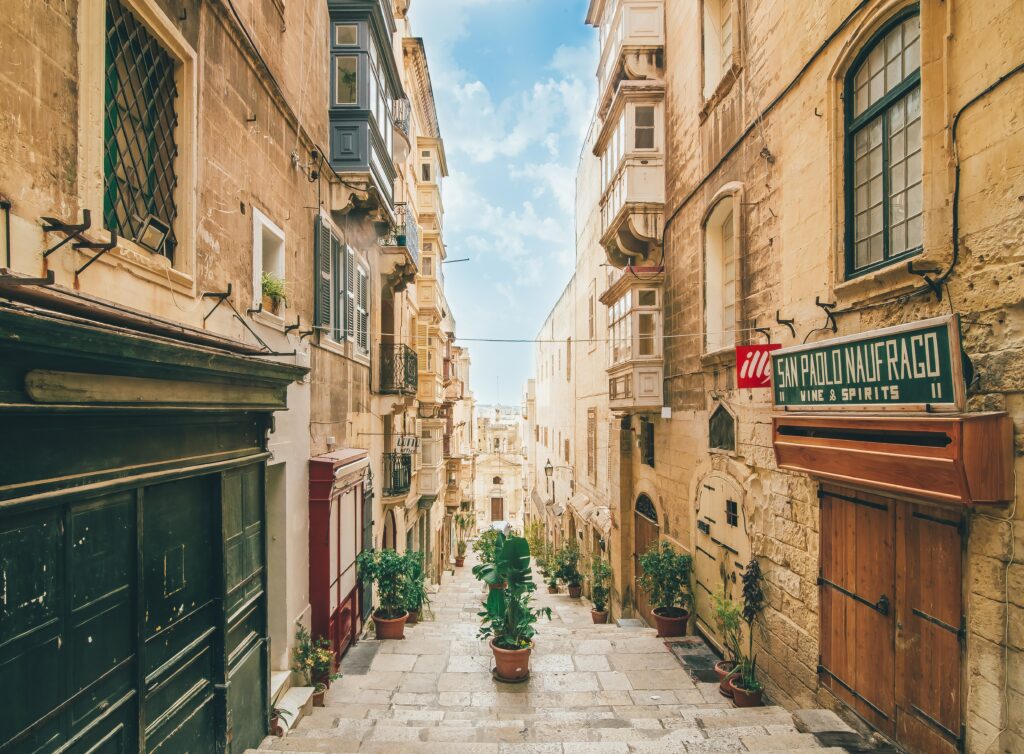
Trapani, Sicily, Italy
Trapani, Sicily, Italy
Overview
Arrival 08:00 / Departure 21:00
Surrounded by glowing turquoise waters and rugged coastline, Trapani invites you to explore western Sicily's ruins, intense flavours, and sun-soaked leisure pursuits. Built on salt and tuna exports, Trapani is experiencing a renaissance, having been lovingly spruced up as a sailing capital, and an international airport bringing in visitors from far and wide. The town looks out over the Egadi Islands, gazing west to witness some of Siciliy's most evocative sunset displays. Start exploring Trapani from its historic core, a dense network of alleys hosting a collection of small shops, restaurants and wine bars. You’ll encounter the Cathedral of San Lorenzo – where colourful artworks are spread below sweeping arches and a beautiful domed roof. Sicily feels like an island on the cusp of continents, and Trapani practically has one foot in Africa, as you soak in its pretty whitewash houses and fusion of foods and arts. Discover the Ancient Greek influence by venturing to rich archaeological sites nearby, like Selinus and Segesta, where the treasures from the past have been unearthed and displayed. Pyramids of white salt rise up at the Riserva Naturale Saline di Trapani e Paceco. These salt marshes and windmills are a symbol of Trapani, and although sea salt production is much less important today, the small white hills remain a Trapani landmark. Look out for the pink flamingos wading in the salt pans below. For beach days, the Egadi Islands can be easily reached from Trapani - Favignana is the largest and most popular.
Tunis (La Goulette), Tunisia
Tunis (La Goulette), Tunisia
Overview
Arrival 08:00 / Departure 17:00
Tunisia's capital lies at the western end of the shallow Lake Tunis, which opens to the sea at La Goulette. This is the first of a string of beach suburbs that stretches away to the north; it is here that the city's port is located. This coastal area includes the ruins of ancient Carthage and the picturesque suburb of Sidi Bou Said, places that attract more visitors than Tunis itself. As far as capital cities go, Tunis has an easy-going, unhurried air about it. It is a very liberal city by Islamic standards and certainly leading the way in Western trends for the rest of the country. In Tunisia, the struggle for independence didn't take the violent course that it did in Algeria. Ruler Ahmed Bey, who governed from 1837 to 1855, encouraged Westernization and brought in military and other advisors to this end. In 1861, during the reign of Mohammed Sadiq, a constitution - the first in the Arab world - was proclaimed. Until the time of the French protectorate, the medina was very much the center of things. Then, under the French influence, the ville nouvelle (new city) emerged with its major banks, department stores, and administrative services. The main focus of ville nouvelle is the wide, tree-lined Avenue Habib Bourguiba. At its western end, this major thoroughfare becomes the Avenue de France, terminating in the Place de la Victoire and the entrance to the medina.
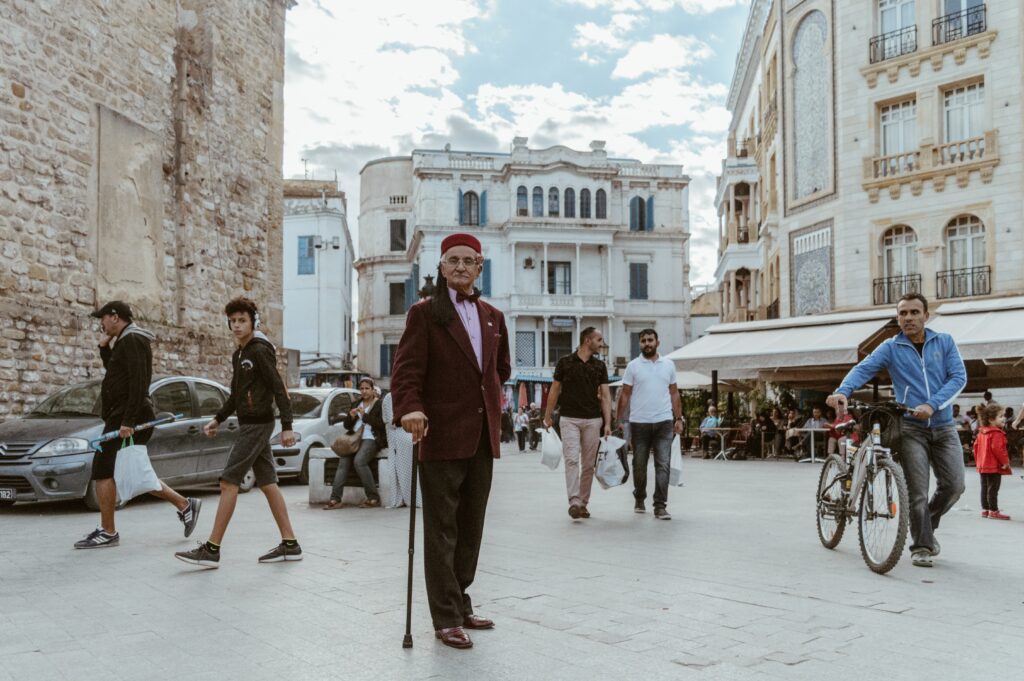
Day at Sea
Day at Sea
Overview
International Waters

Cartagena, Spain
Cartagena, Spain
Overview
Arrival 09:00 / Departure 17:30
On the crossroads of mighty cultures, this Murcian port has endless ancient stories to share. A valuable natural harbour attracted many civilisations to this sun-bathed, southeasterly setting - following its foundation by the Carthaginians in 227 BC. Blending the imprints left by countless cultures on this global junction, the presence of everyone from the Vandals to the Phoenicians and Moors can be felt as you explore, walking between ruins and celebrated modernist architecture along Calle Mayor. Cartagena is crowned by the soaring Castillo de la Concepcion - rise to the stout castle aboard a panoramic lift. Inside, look through reams of archaeological treasures, or admire the rolling views down over the port and across the waters. Watch out for the electric blue peacocks who strut flamboyantly. Cartagena's emergence as a visitor destination coincided with a stunning discovery in 1988 - the bowl of a gloriously preserved Roman Theatre. Enter to sit among the grandiose ancient venue, so evocative, you can't help but imagine the historic performances that have graced its stage. Wander the breezy waterfront, looking across the narrow strait towards Africa's distant haze, and spotting gleaming warships. Cartagena's perfect harbour means it has been one of Spain's oldest strategic navy positions since the 16th century. Settle to enjoy the joys of tapas in lively bars - sampling crisped paella, squid and honeyed-aubergine. Easter's Semana Santa festivities are typically lively here, as hooded processions, lavish floats and sombre fiery displays roll through the streets.
Malaga, Spain
Malaga, Spain
Overview
Arrival 08:00 / Departure 23:00
Bathing in the sunshine coast’s stunning subtropical climate, and laying out endless spectacular beaches, it’s no surprise that Malaga is one of Spain’s most popular cities. The already impressive cultural appeal of this holiday city has skyrocketed over recent years, and with a storied old town and Moorish fortifications, Malaga has a lot to offer. Nearby, you can recline on the renowned beaches of the Costa del Sol, or venture inland to discover the Moorish treasures of Granada and Cordoba. La Malagueta beach is Malaga’s spacious urban beach, perfect for a sunbathe and a dip in the warm water, before enjoying seaside cocktails or seafood tapas in the restaurants nearby. Malaga and the Costa del Sol may be best known for glorious weather and beaches, but Malaga can now stake a genuine claim as an artistic powerhouse too. Visit the renowned Picasso museum – housed in the artist’s birthplace – before exploring the freshly opened outpost of the Pompidou Centre. The art also spills out onto the streets in the colourful Soho district – splashed with vibrant street paintings. Known as La Manquita – or the one-armed woman – the city’s cathedral rises over the historic old town. Its huge bell tower stands tall, but an accompanying second tower was never completed - hence the nickname. The Alcazaba fortress palace looms over the waterfront and forms a spectacularly preserved remnant from the era when the Moors controlled the Andalucía region. Discover more of the Arabic influence by visiting Granada’s Alhambra palace, or Cordoba’s La Mezquita mosque. Together with Seville’s converted cathedral, the cities form Andalucía’s Golden Triangle of Moorish wonders.

Gibraltar
Gibraltar
Overview
Arrival 08:00 / Departure 22:00
"A curious slice of Britain - picked up and plonked into the sun, sea and sand of southern Spain - Gibraltar is a unique and historic peninsula, crowned by the iconic Rock of Gibraltar mountain. Bright red phone boxes gleam, Union Jacks flutter in the breeze, and cones of fish and chips are scoffed in the sun in this most British of outposts. At times a surreal and strange juxtaposition, you can be gazing at the African shoreline from the beach one moment, and carefully treading across the runway of a crammed-in international airport the next. Gibraltar's cathedral-like Rock towers 400 metres above the waves and the stark limestone mountain watches out across a narrow, strategic strait between the European and African continents. The pointed Rock is a symbol of this unique place, and you can hike it - or take the convenient cable car - to enjoy the views and meet the mischievous colony of Barbary macaques who live on its slopes. Europe's only wild monkeys roam free and loose on the mountain - so be sure to hang onto your sunglasses and cameras. The Siege Tunnels bring to life the struggles for this land, with the plucky British boring tunnels through the rock by hand, effectively converting it into a giant watchtower, capable of defending the distant territory. Natural caves inside droop with stalactites, while a squat Moorish castle stands proudly at its summit. Gibraltar packs a lot into this two and a half square miles of territory, which has fallen under British jurisdiction since 1713. Grand Casemates Square is a sunbathed plaza, and drizzly old Britain feels a world away, as you sit back and sip ice-cold beers and cocktails in Gibraltar's historic centre."
Cádiz, Spain
Cádiz, Spain
Overview
Arrival 08:00 / Departure 23:00
More than a hundred watchtowers gaze out across the waves surrounding this ancient Andalusian city. Sprinkled with evocative cobbled side streets, you’ll explore 3,000 years’ worth of history, while stumbling across palm-tree lined plazas of shaded coffee sippers. Cadiz claims the mantle of Western Europe’s oldest city, and every piece of architecture - and every wrong turn - offers a chance to discover fascinating new tales. Founded by the Phoenicians in 1100BC, Christopher Columbus used the city as a base for his exploratory, map-defining voyages of 1493 and 1502. The port grew in importance and wealth as Cadiz’s strategic location close to Africa’s northern tip helped it blossom into a centre for New World trade. Catedral de Cádiz, is a display of the city’s wealth and importance, looming spectacularly over the Atlantic’s waves, with cawing seagulls sweeping between its twin bell towers. Inside, treasures from the city’s trading exploits in the West Indies and beyond - which helped fuel the growth of this historically prosperous city – are on display. Enveloped by ocean on almost every side, Cadiz has something of an island feel, and you can cool off from southern Spain’s unrelenting sunshine on the sweeping golden sand beach of Playa Victoria. The two towers of the new El Puente de la Constitución de 1812 mark a contemporary landmark in this most ancient of cities, in the form of a spectacular new road bridge. Torre Tavira, meanwhile, is the most famous of Cadiz’s army of watchtowers, and the highest point in the city. Reach the top for a view of the ocean fringing the city’s expanse, and to learn about the towers - constructed so trading merchants could survey the harbour from their lavish homes. The Central Market is a chaotic place of bartering, where flashing knives dissect fresh fish. Stop in at the orbiting bars to enjoy tapas, freshly prepared with the market’s produce.
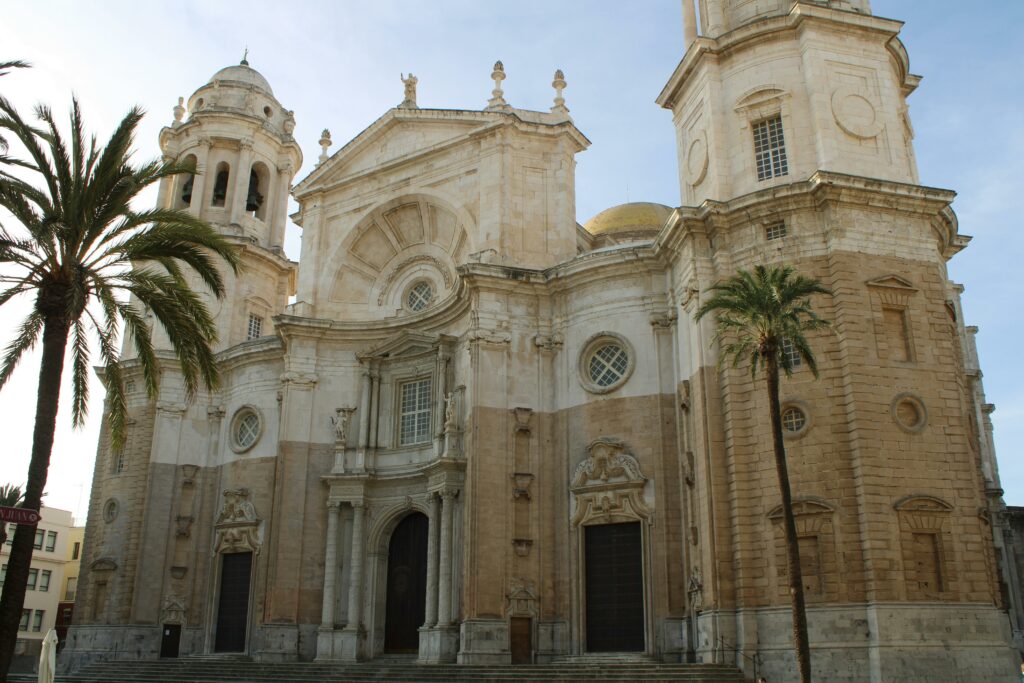
Day at Sea
Day at Sea
Overview
International Waters
Days at sea are the perfect opportunity to relax, unwind and catch up with what you’ve been meaning to do. So whether that is going to the gym, visiting the spa, whale watching, catching up on your reading or simply topping up your tan, these blue sea days are the perfect balance to busy days spent exploring shore side.
Lisbon, Portugal
Lisbon, Portugal
Overview
Arrival 07:00
A glorious mosaic of beauty, freedom and authenticity, Portugal’s capital is a stirring artwork of a city. Known for the seven hills it spreads across, and its stirring fado music, Lisbon is a pastel-coloured blend of houses and beautiful tile artworks - and this creative city strikes a perfect harmony between natural and manmade beauty. Stroll along Alfama's steep, cobbled streets as you explore one of the city’s oldest neighbourhoods - where each house and door could be its own photograph. Look for the decorative tiles, with the distinctive blues and whites of Azulejo ceramics, and visit the dedicated museum to learn more. Afterwards, wind up to São Jorge Castle, where views out across Lisbon’s red rooftops unravel. Just one of many majestic viewpoints, you can also seek out Miradouro da Graça for perhaps Lisbon's finest panorama, with the copper-coloured suspension bridge stretching over sparkling water beyond the sea of buildings. The elegant Tower of Belém rises in the Tagus estuary and is a historic defender of these shores. The grand, carved cloisters of Jerónimos Monastery spread out close by, and there's another UNESCO recognised location close by at Sintra, where a colourful town is set amid thick gardens and towering mountains - capped by the royal Pena Palace. Later, relax and take a quick break to drink Ginjinha, a cherry liqueur made from chocolate cups instead of coffee. Lisboetas have a sweet tooth, and the famous Pastel de Nata's crumbling pastry and caramelised-custard topping is the essential accompaniment to any coffee stop.
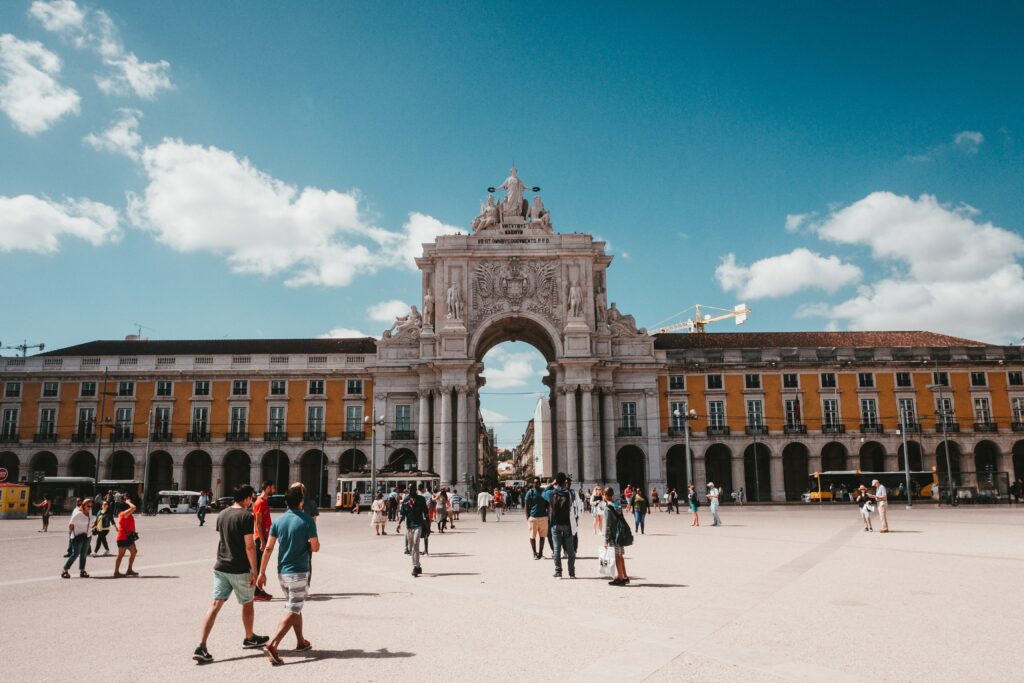
Interested in learning more? Contact Luxury Round the World for a complimentary booking consultation.
Contact UsAbout the Silver Dawn
Welcome Aboard
A new world of luxury is waiting aboard Silver Dawn. Elegant and modern, Silver Dawn is the natural evolution of our fleet. Large enough to offer eight dining options – including the superb Sea and Land Taste (S.A.L.T.) programme – yet small enough for the famed Silversea onboard ambience, Silver Dawn inherits the best features of her sister ships Silver Muse and Silver Moon, but is in a class all of her own. With sumptuous suites, outstanding itineraries, plus cutting-edge design and technology and the outstanding OTIVM wellness concept, Silver Dawn sets new standards of luxury. Wake up to a new dawn with Silversea.
About the Silver Dawn
Passengers
596
Suites
298
Restaurants
8
Inaugural Sailing
2021
Ship Length
698 Feet
Cruise Details
Check out our FAQ for details on everything from how to protect your investment with travel insurance to how to pack for the trip of a lifetime.
Rates & Dates
What's Included
Luxurious benefits that ensure you travel in comfort and which add an array of enriching cultural events make this voyage-of-a-lifetime an even more extraordinary experience.
- Private Executive Transfers
- Business Class Air (From Selected Countries/Gateways)
- Meet & Greet
- Bon Voyage Reception, Dinner and Overnight Accommodation Pre-embarkation
- Shore Excursions (One Per Port, Per Day)
- $1,000 Onboard Spending Credit Per Guest (Up To $2,000 Per Suite)
- Exclusive World Cruise Events
- Two Exclusive S.A.L.T. dining experiences ashore
- One Otium Spa Treatment Per Guest
- Special Commemorative Gifts
- Silver Shore Baggage Valet (Up To 2 Bags, 50lbs Each, Per Guest)
- Laundry Service
- Unlimited Premium Wi-Fi (up to 2 devices per person)
- Medical Service
- Visa Package
Dates
Date
Double
Single
January 6, 2026 — May 27, 2026
From $93,900 per person
Inquire
Join Us
The world's most iconic places, remarkable experiences, and not-to-be-missed natural wonders are waiting for you.

